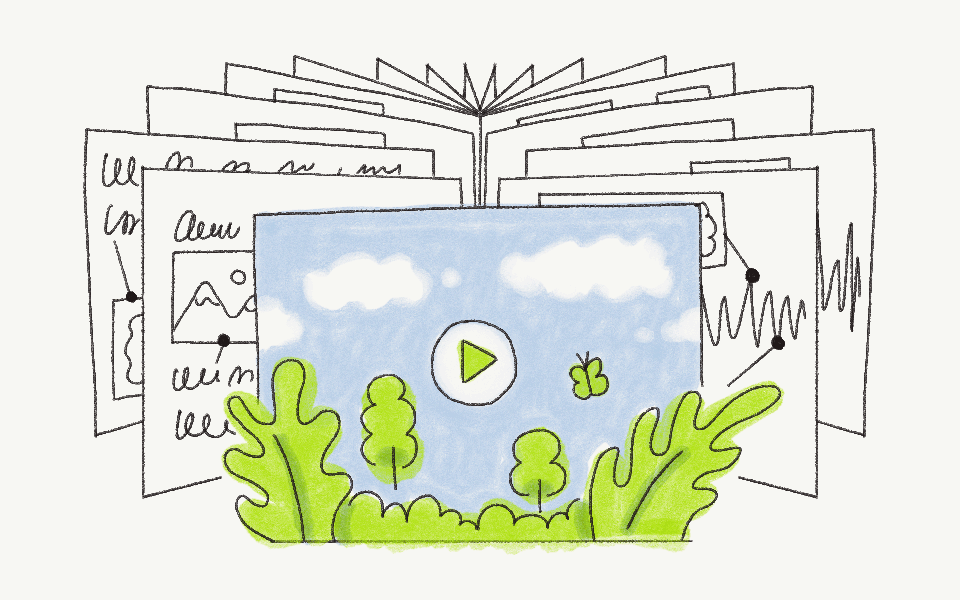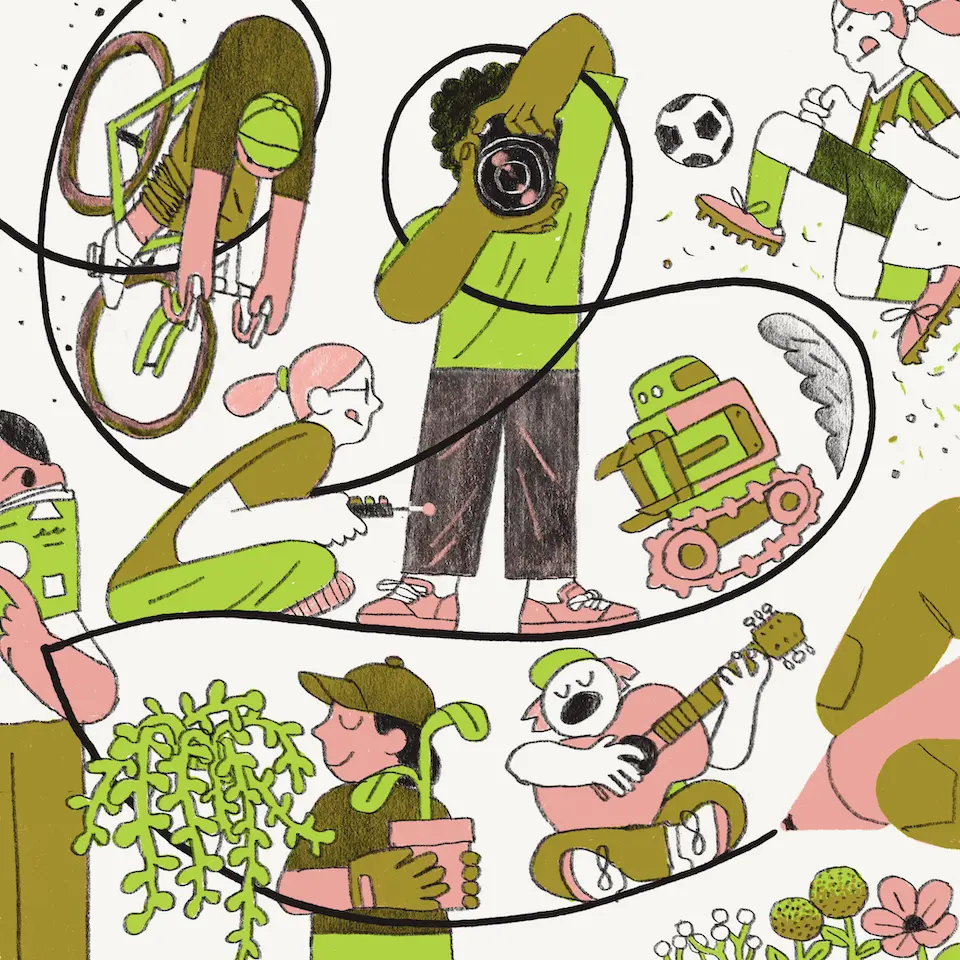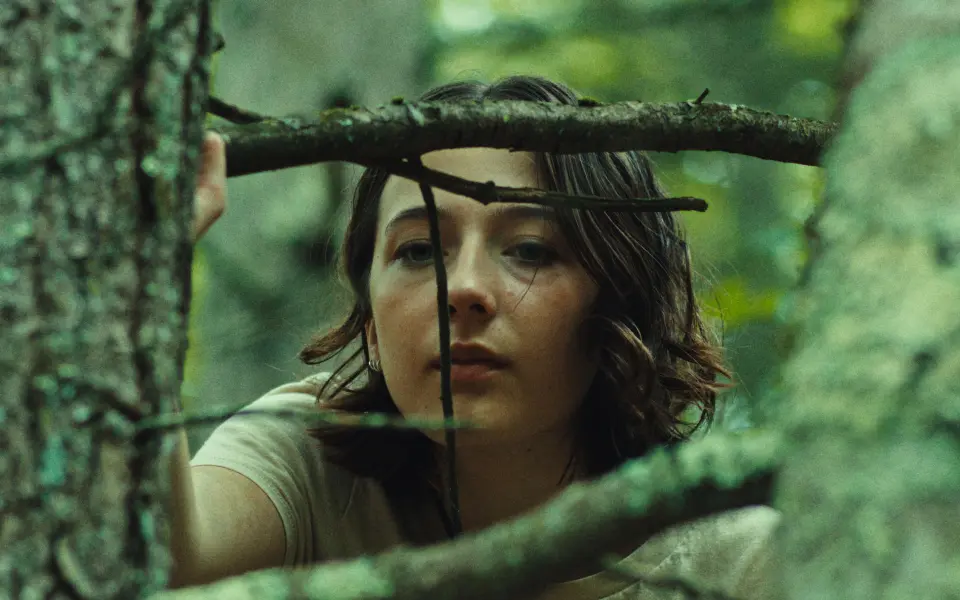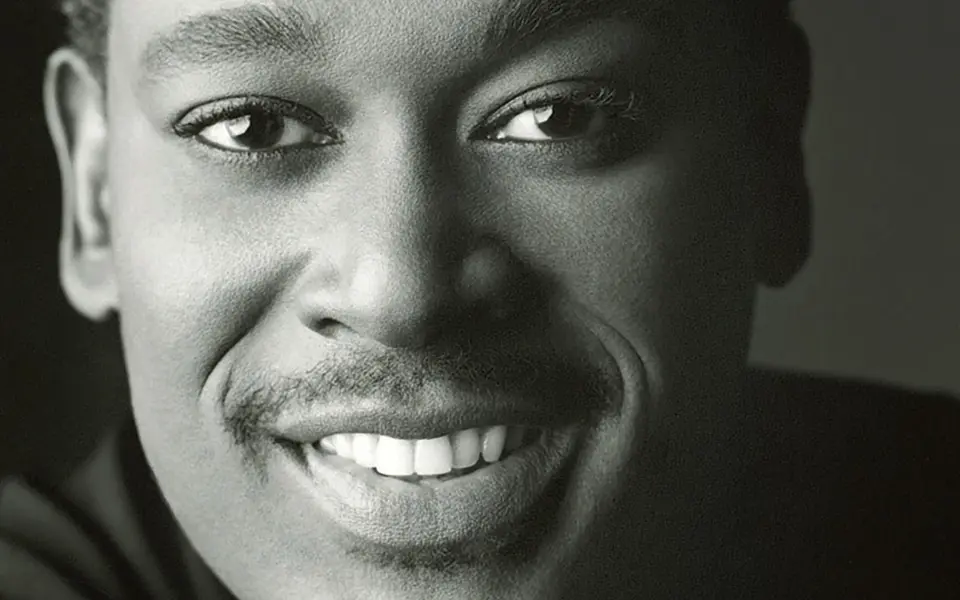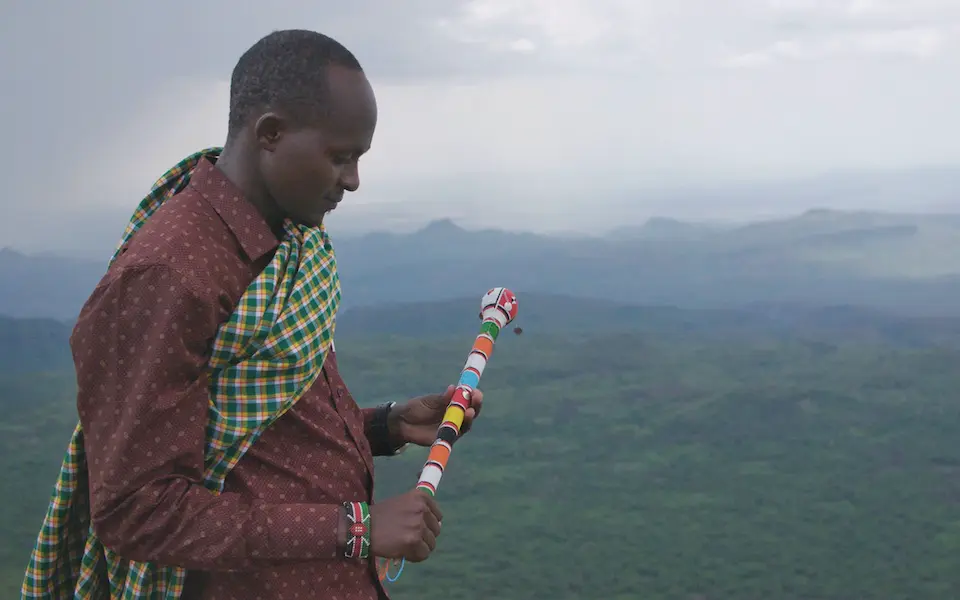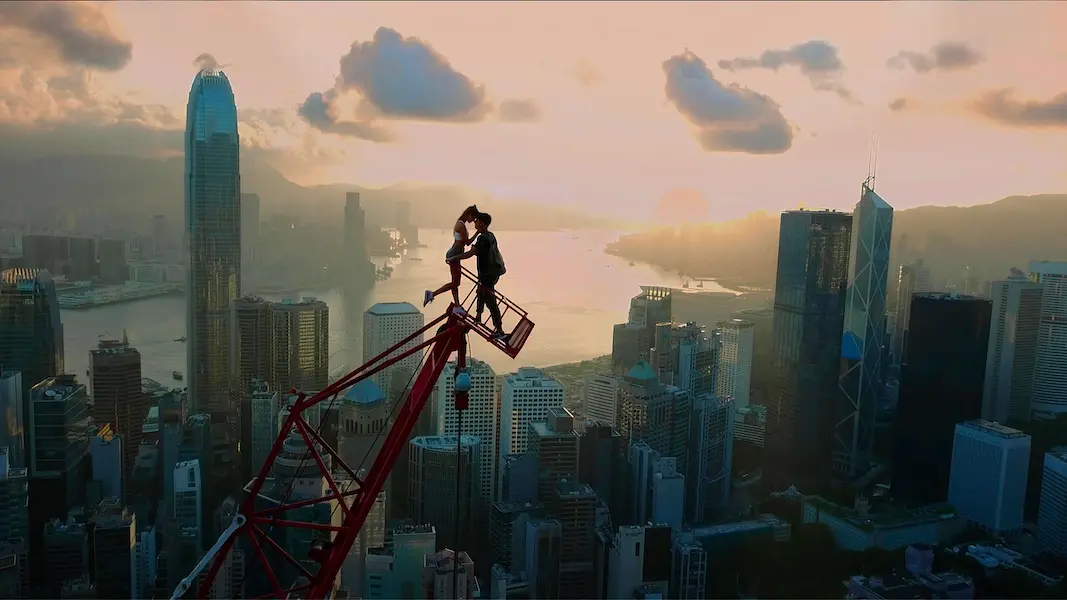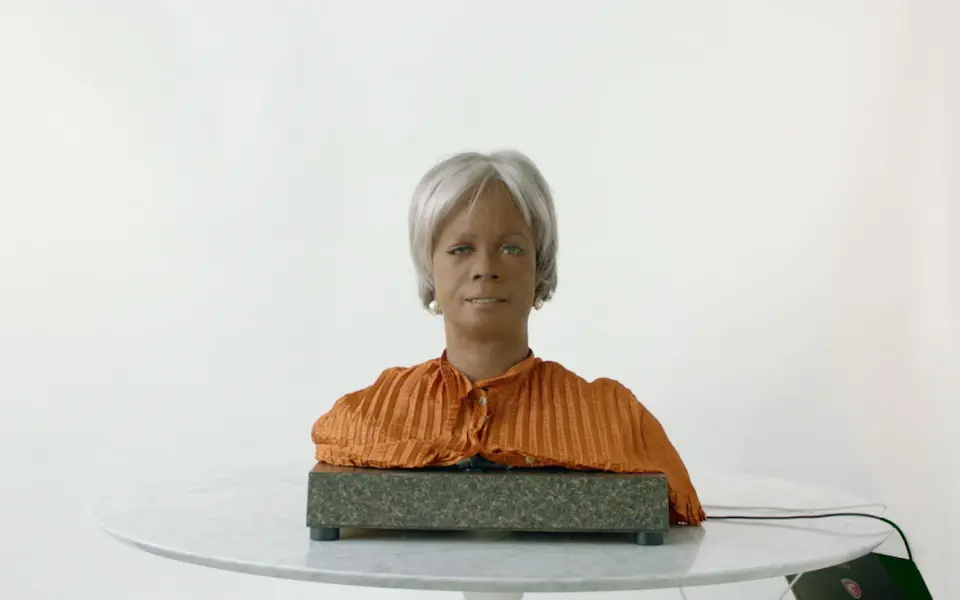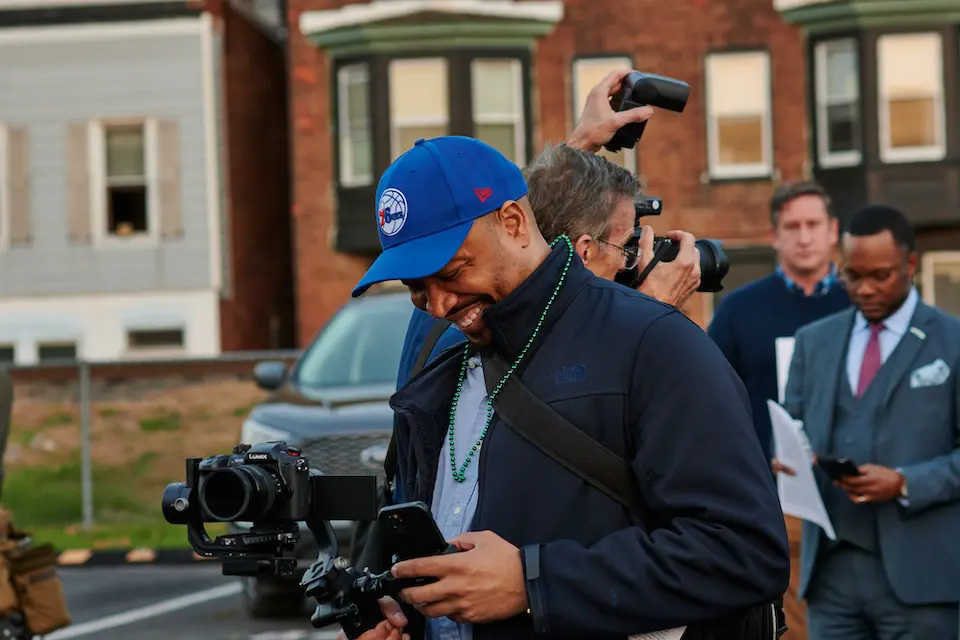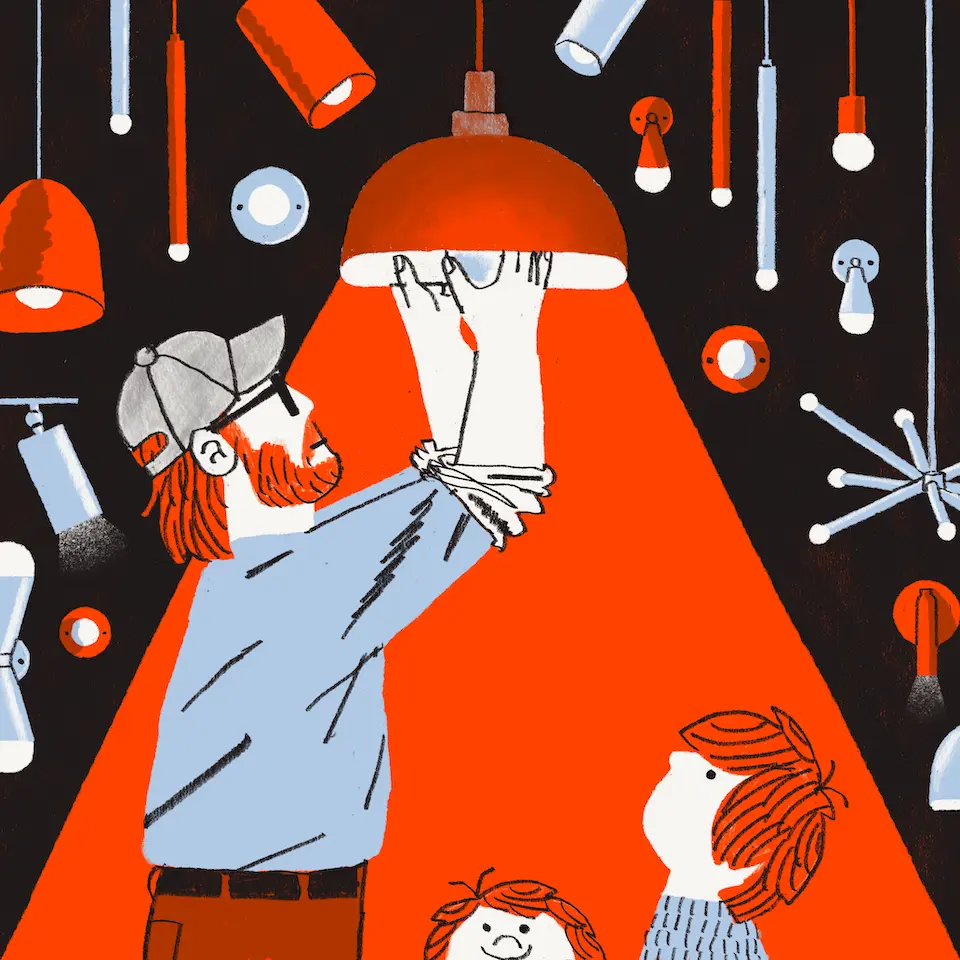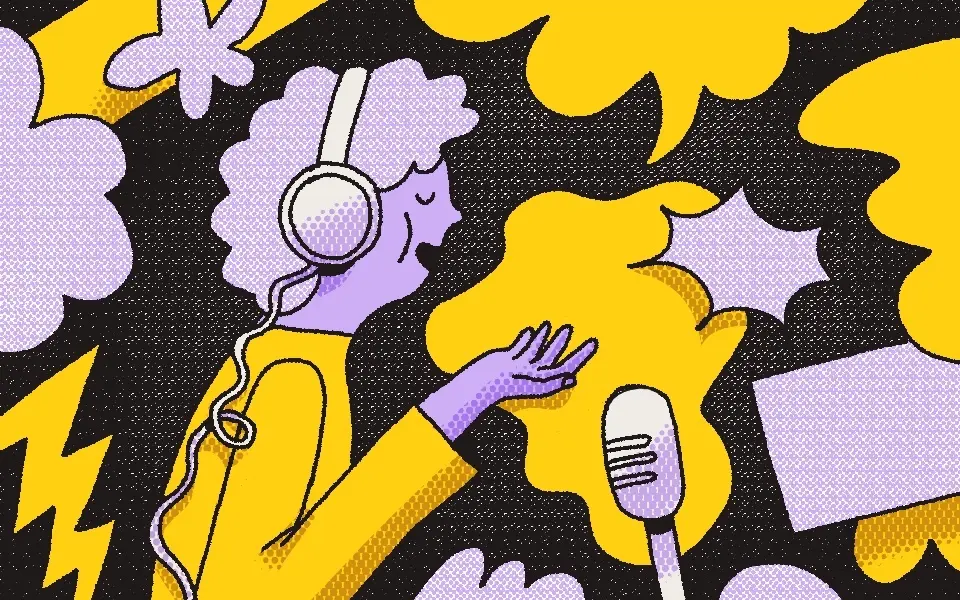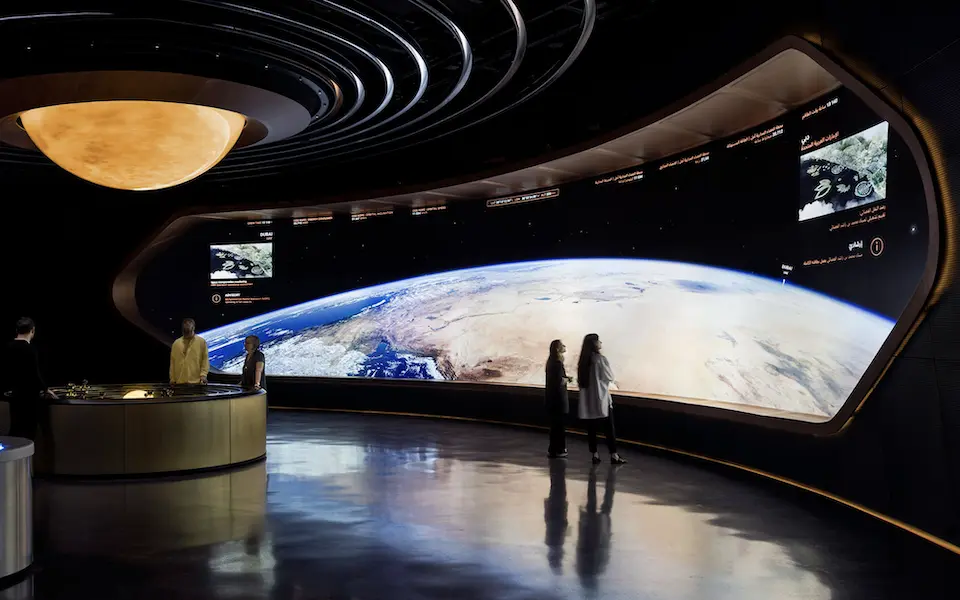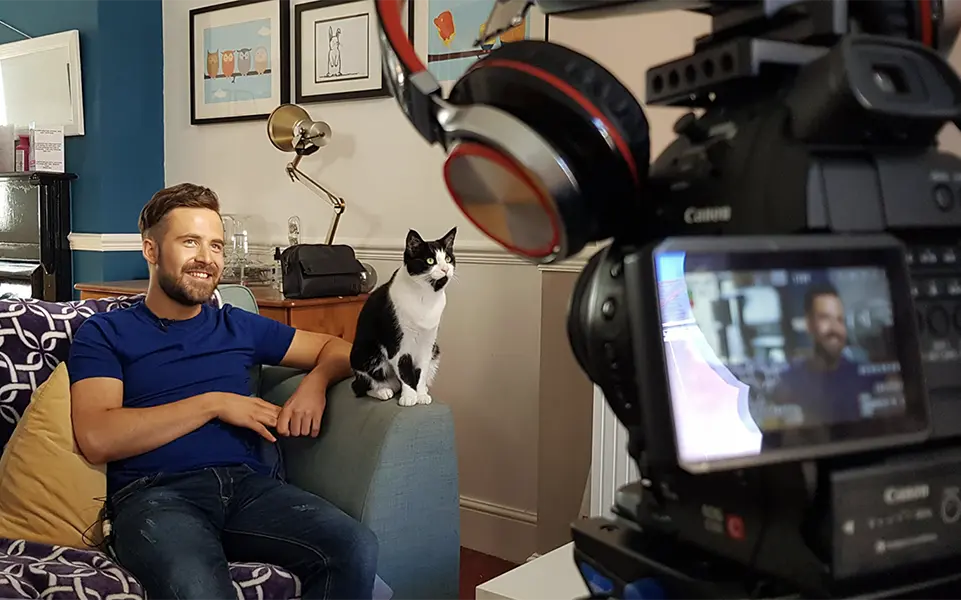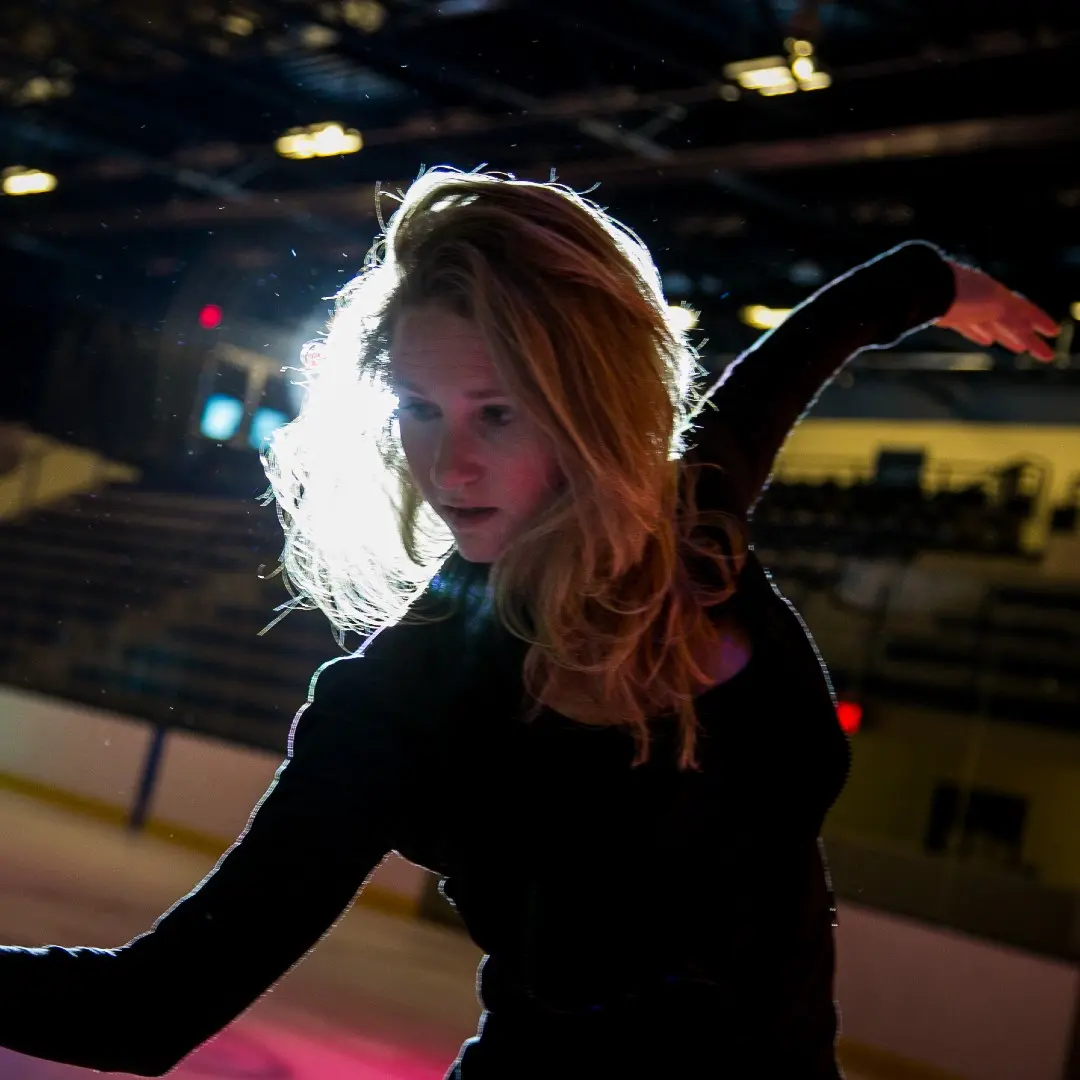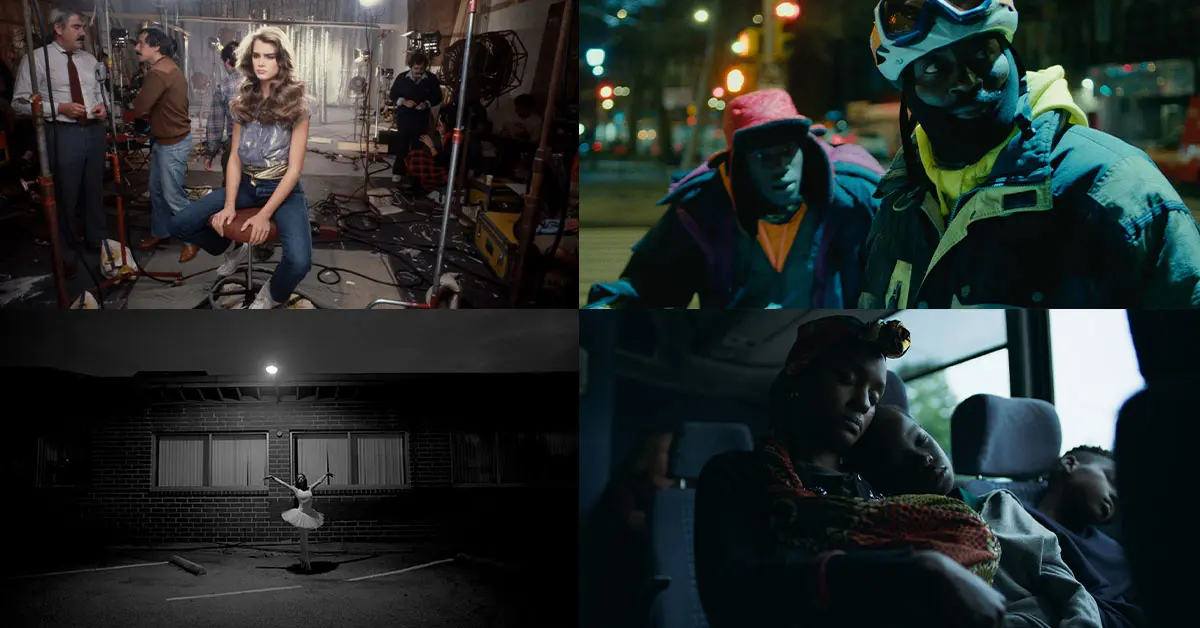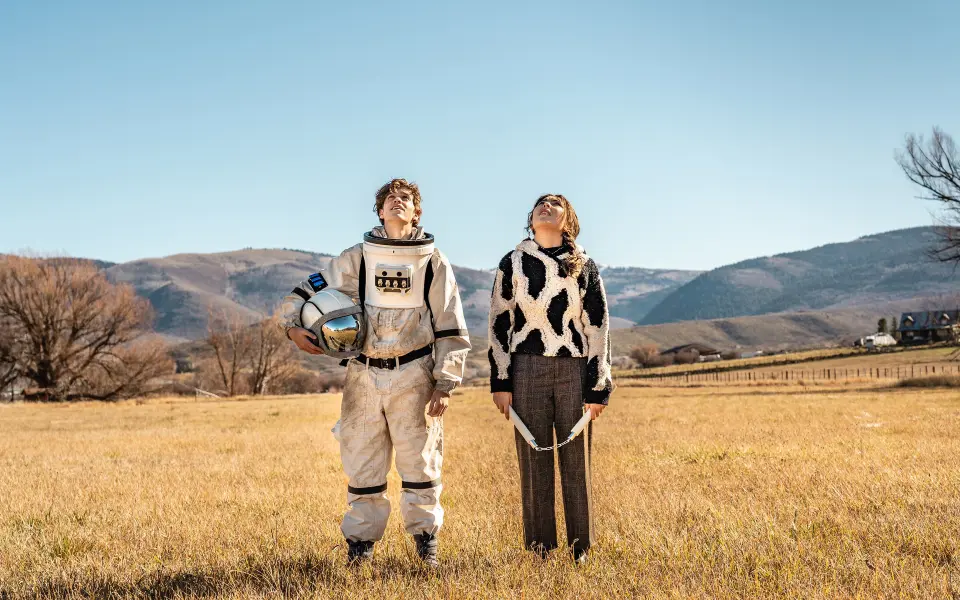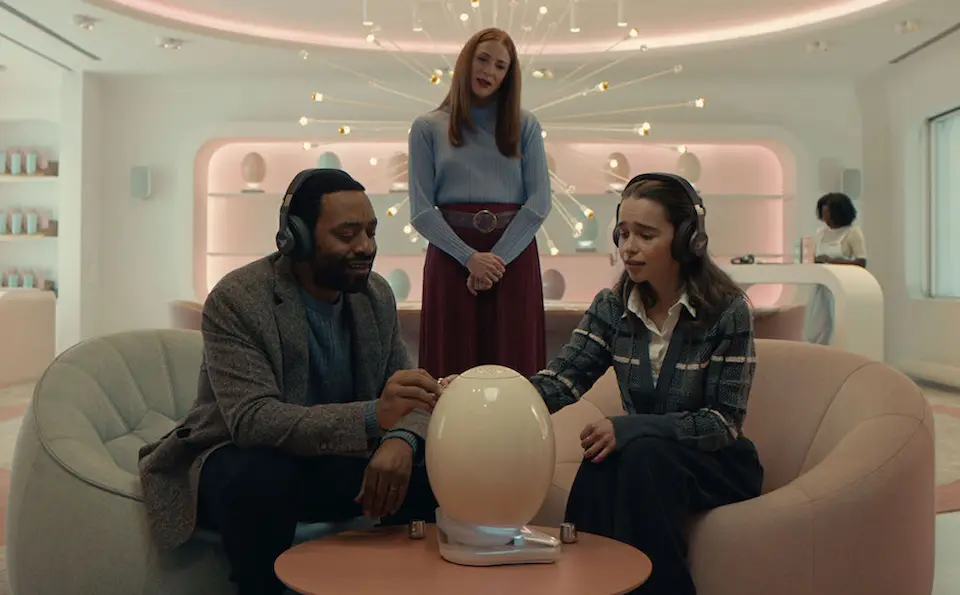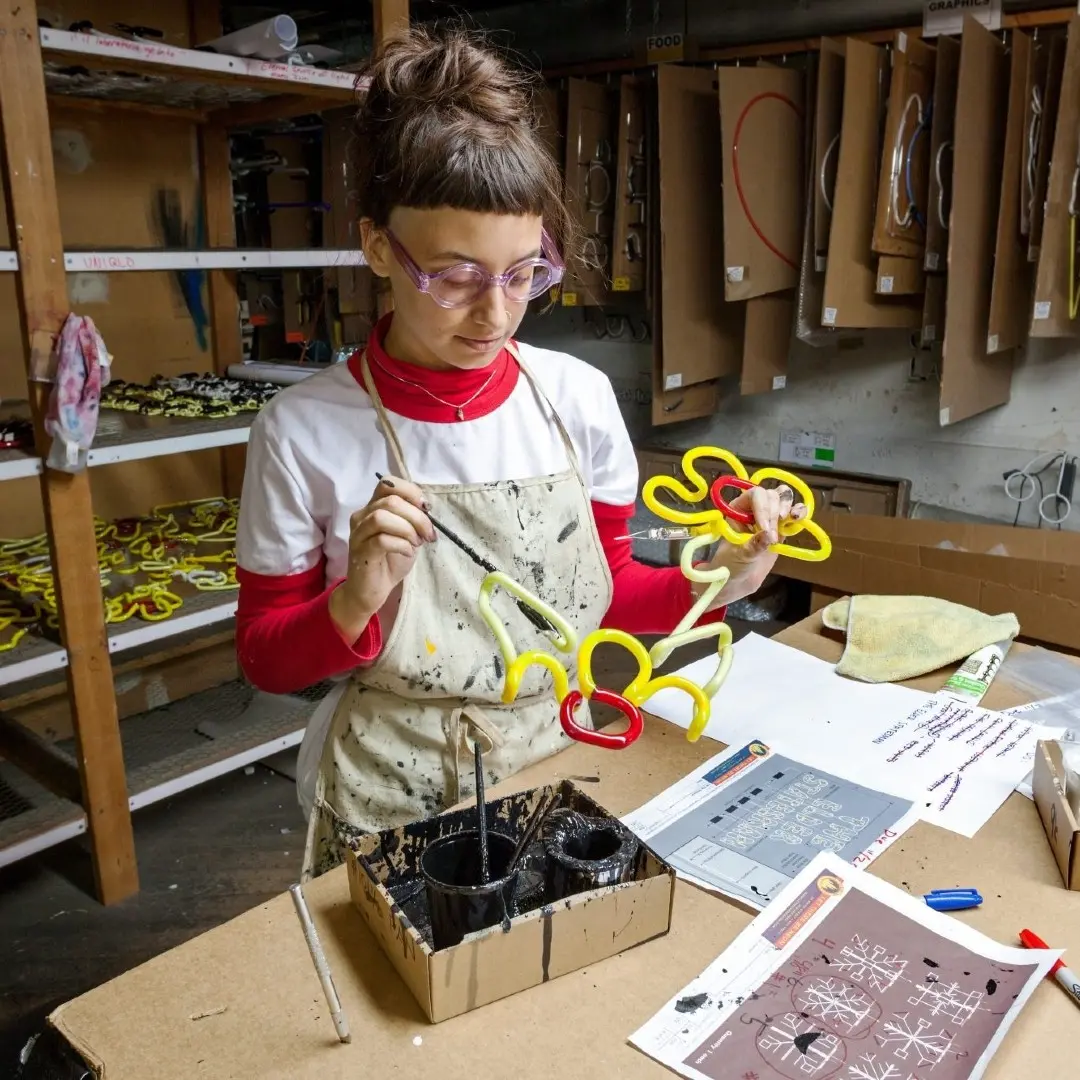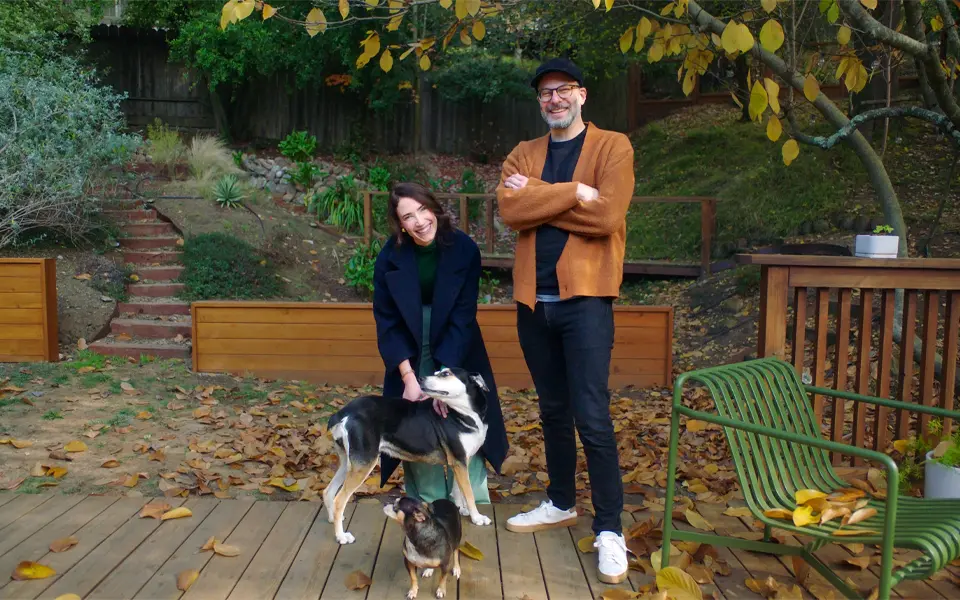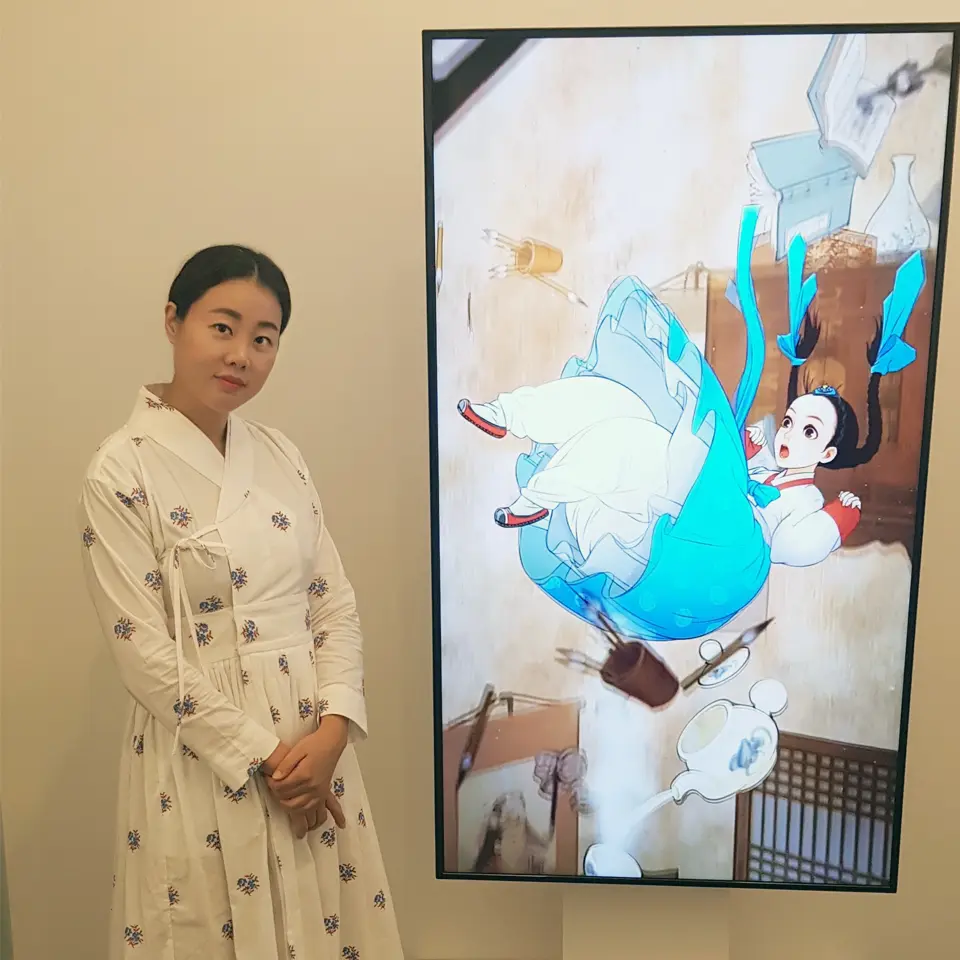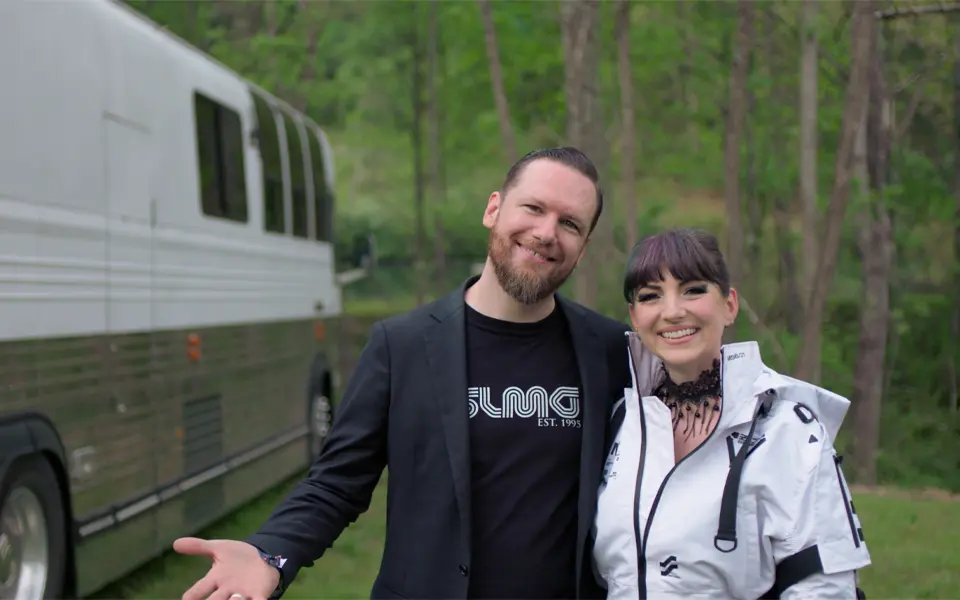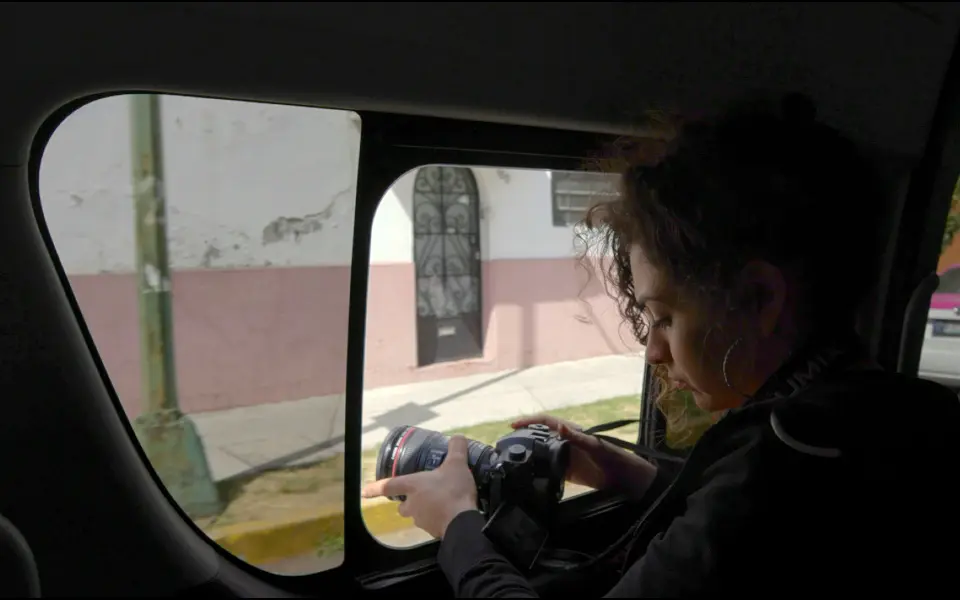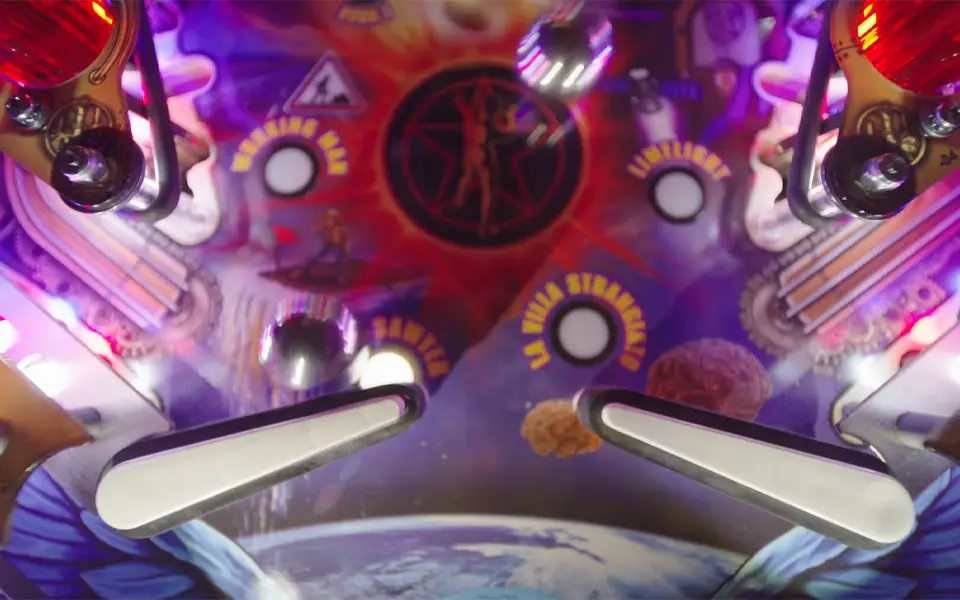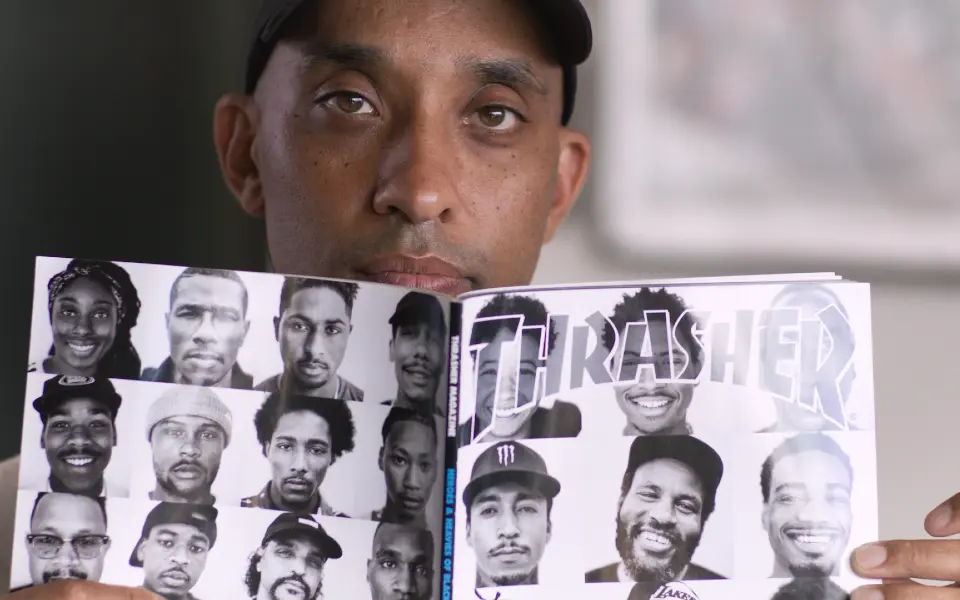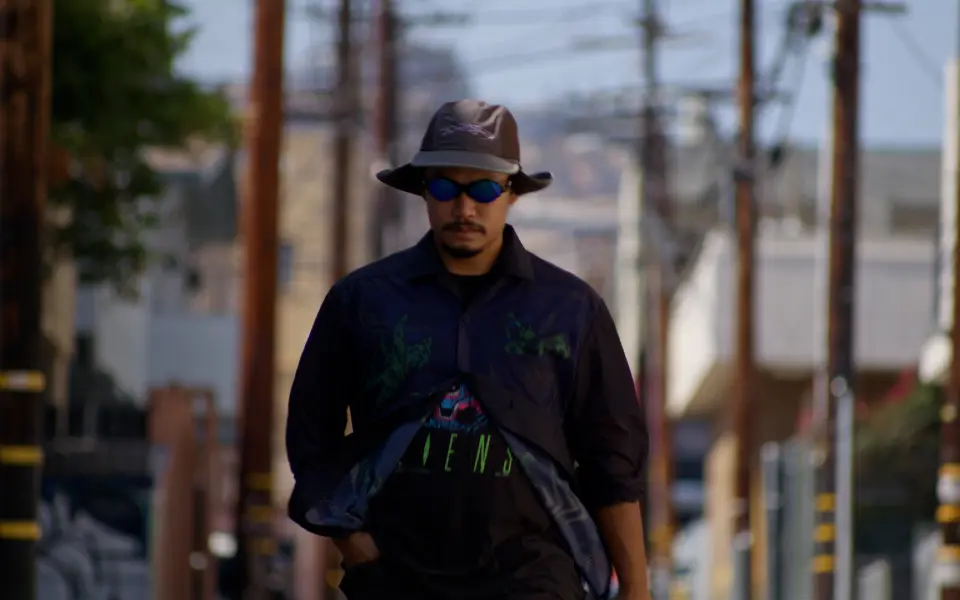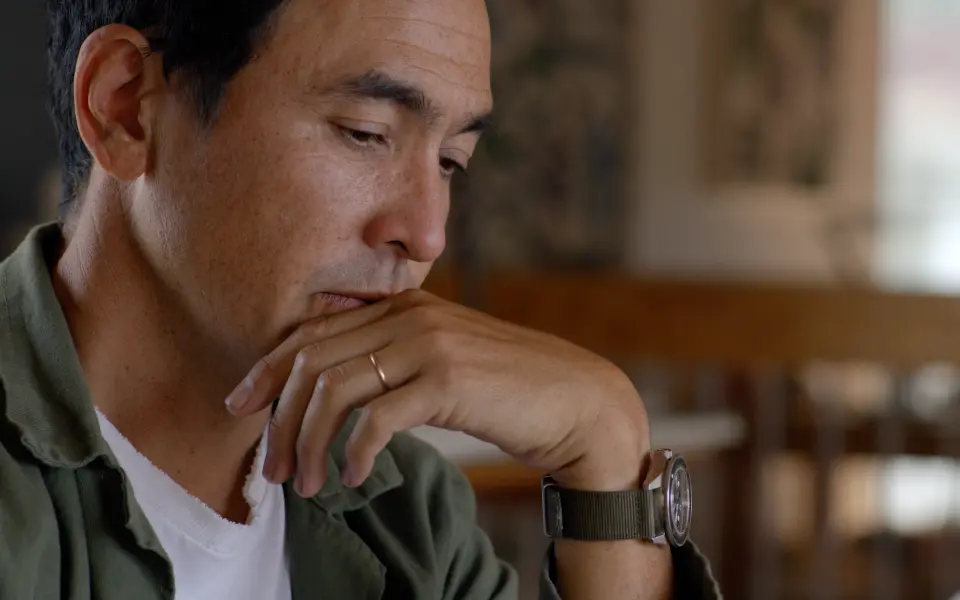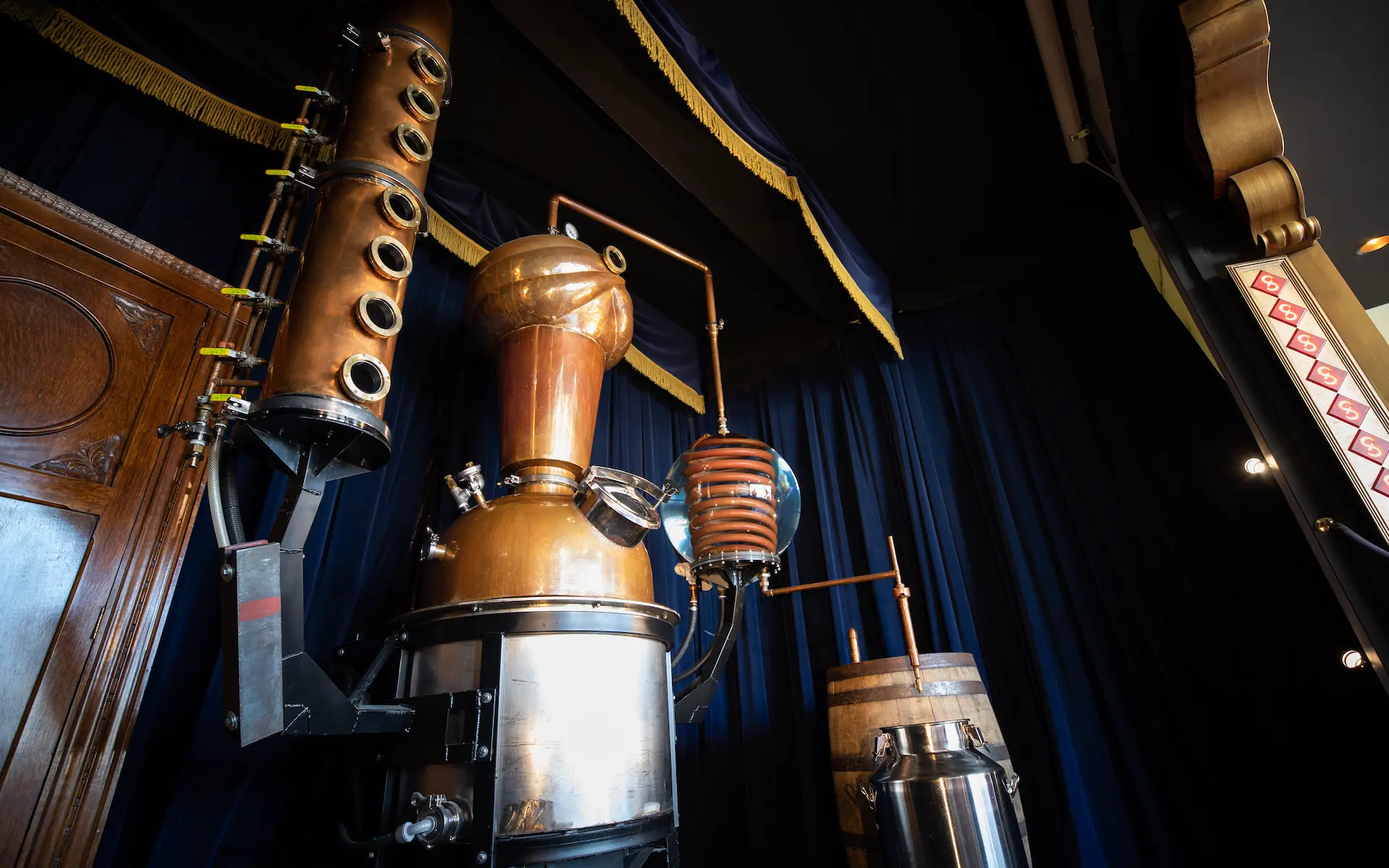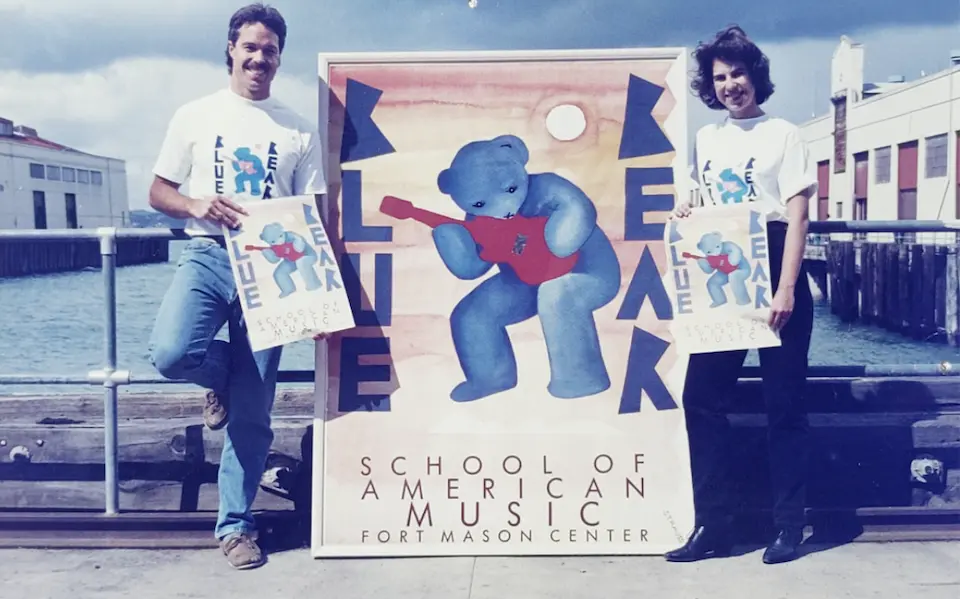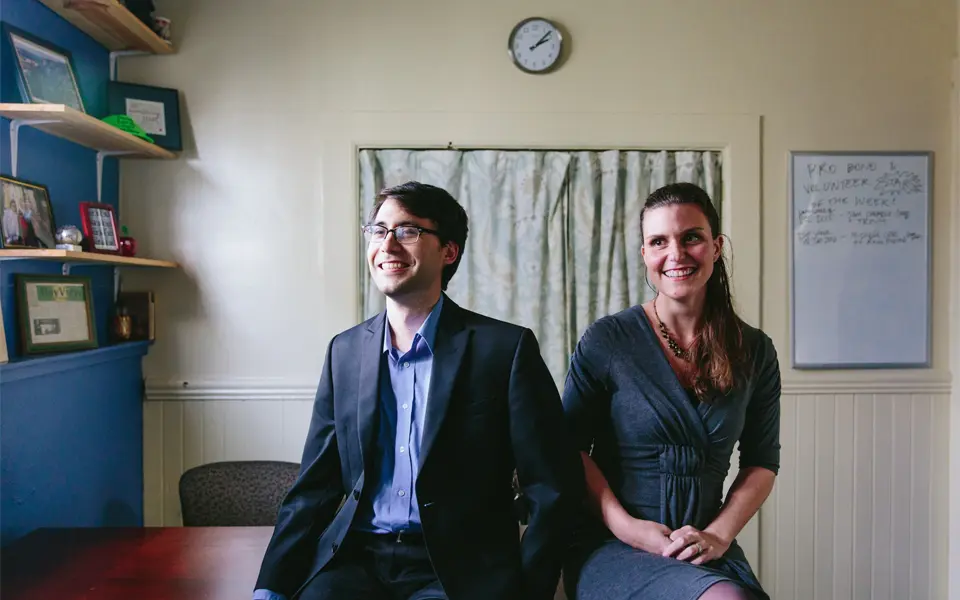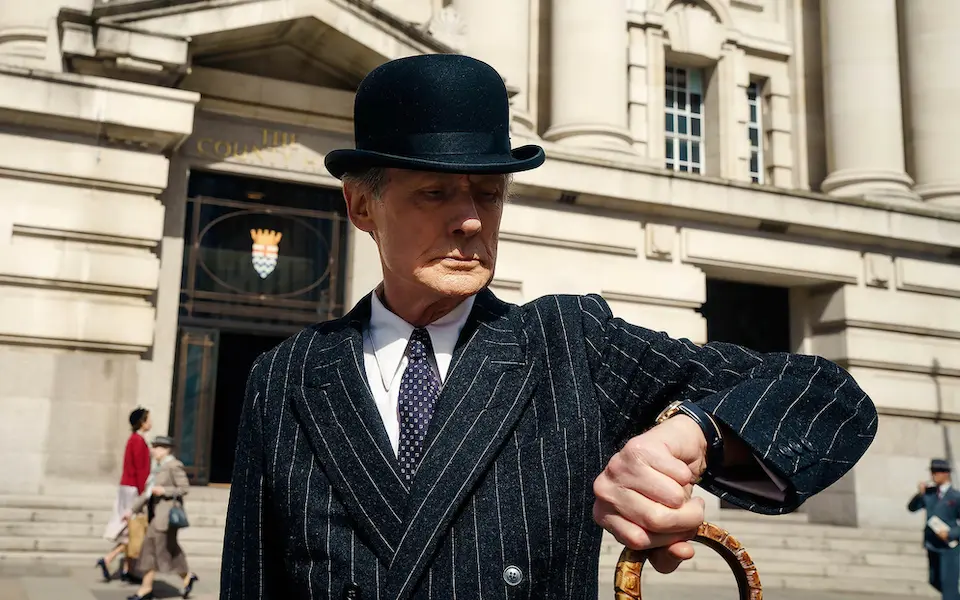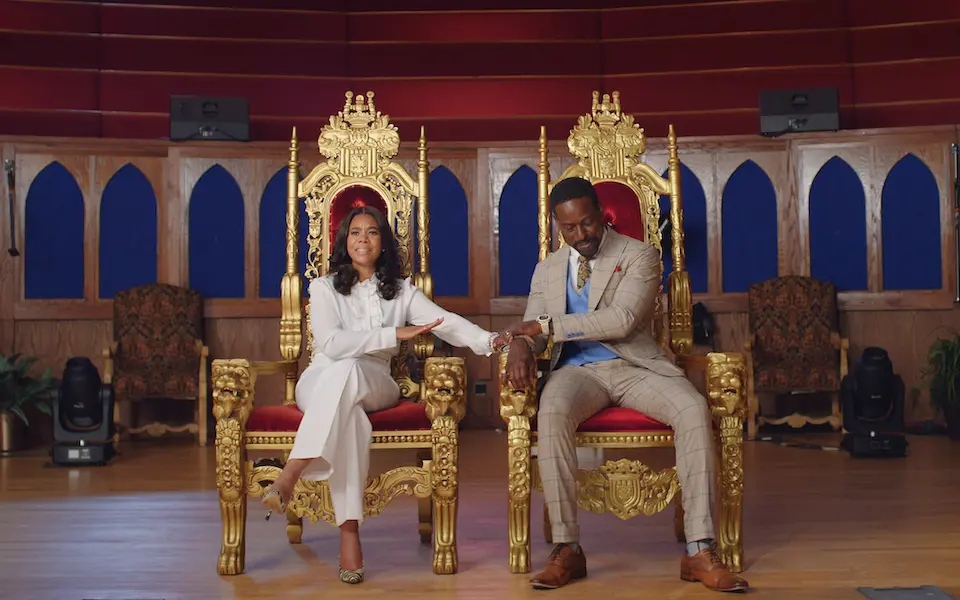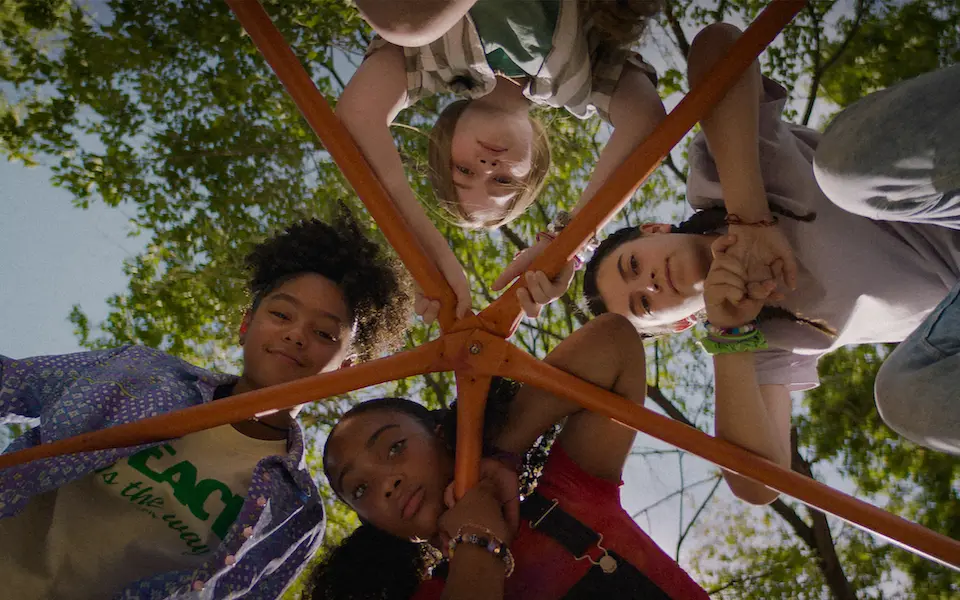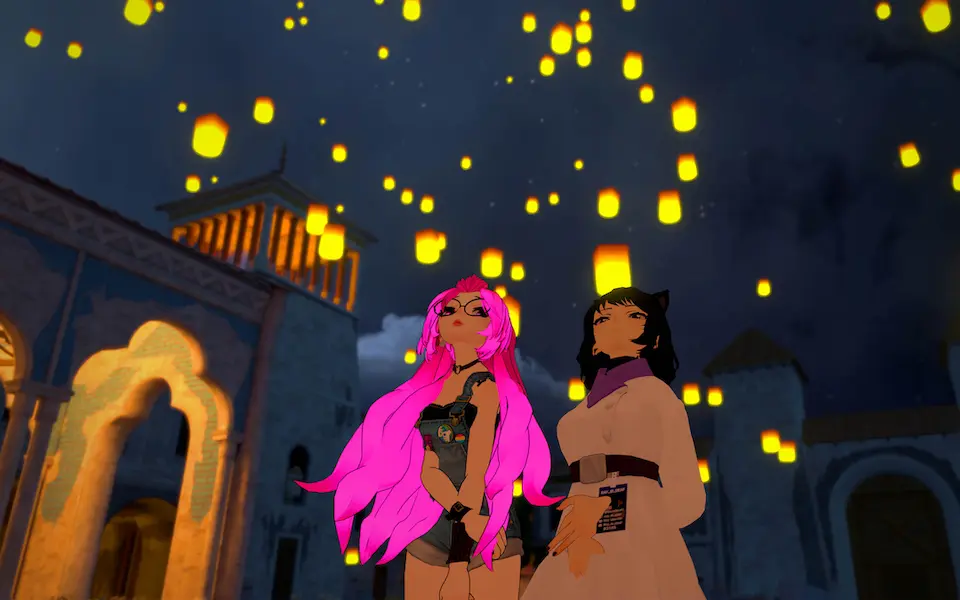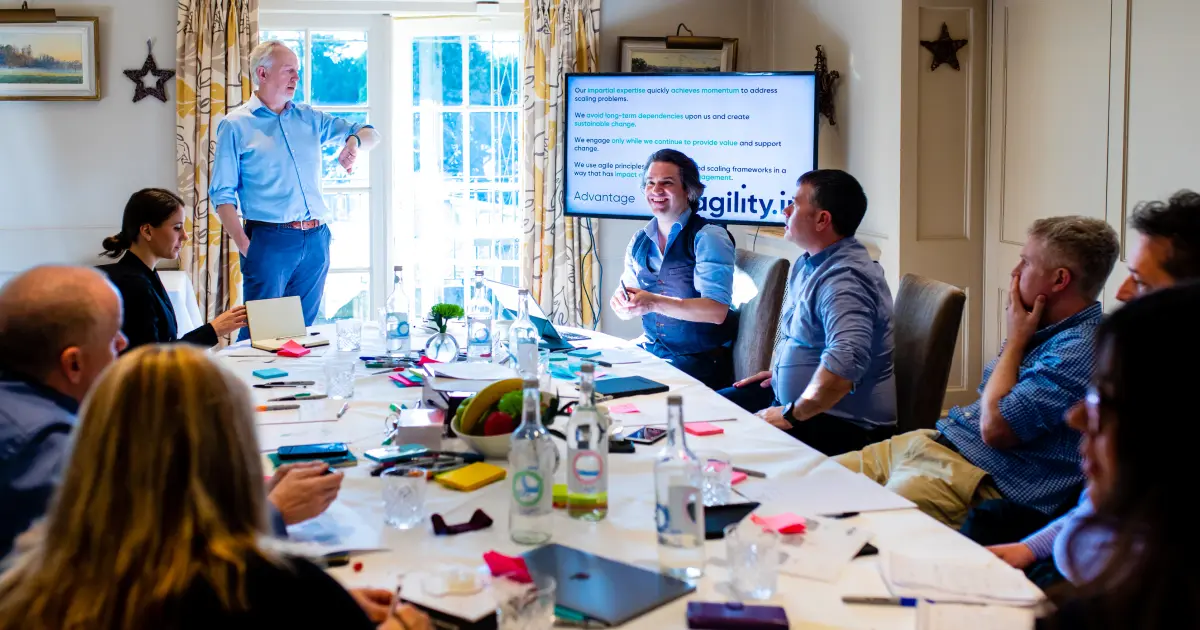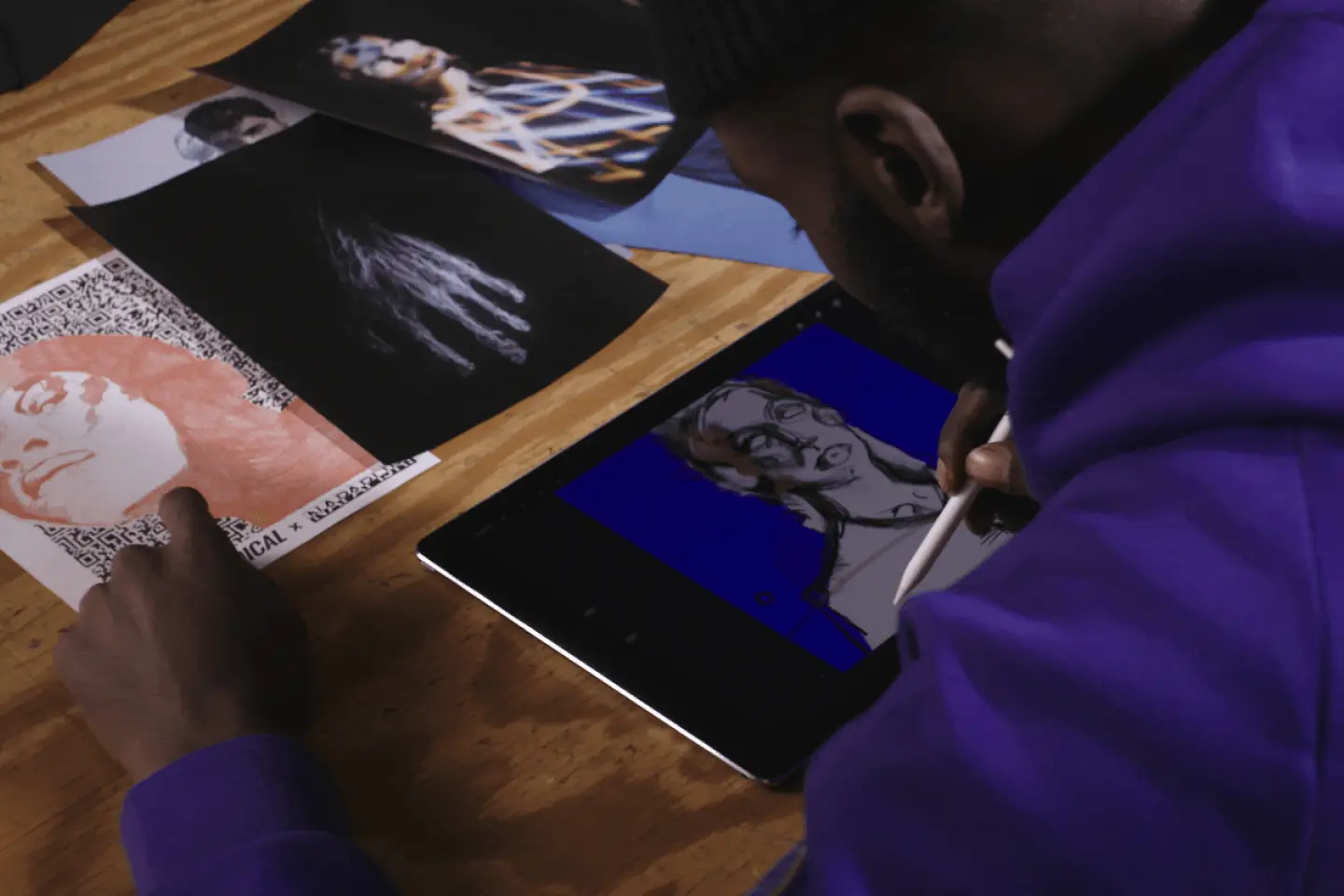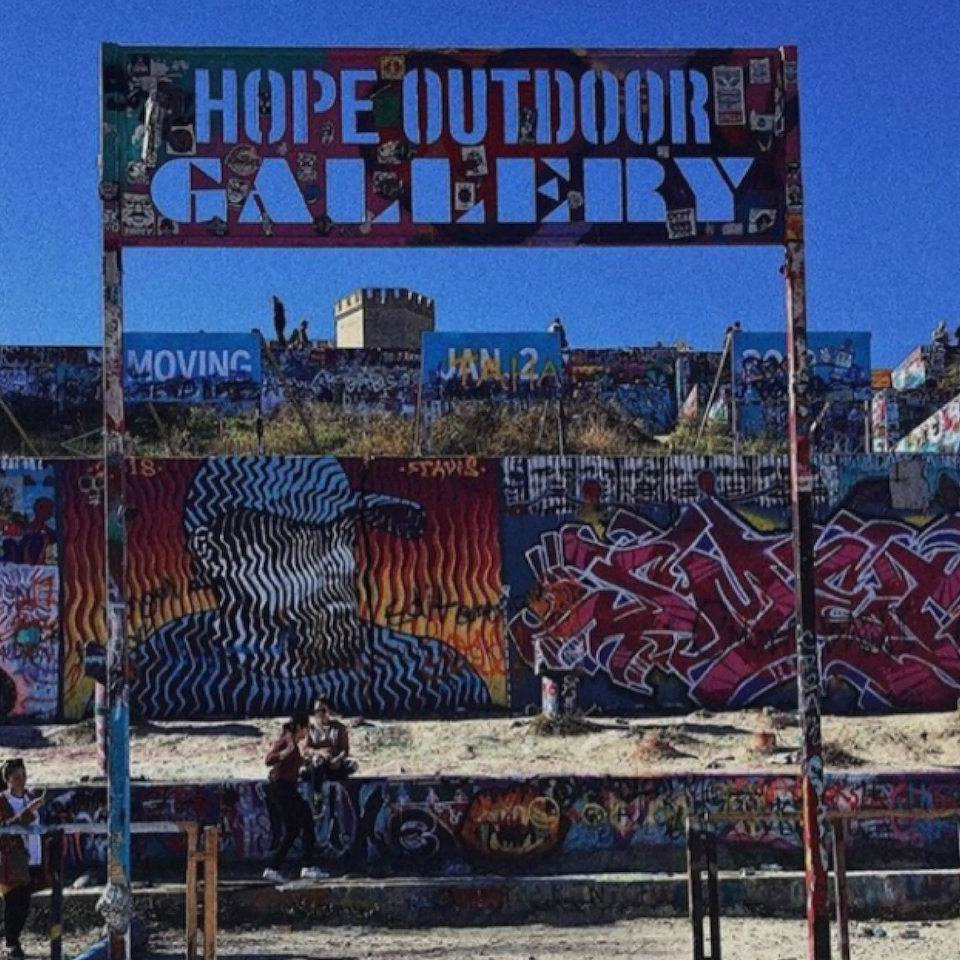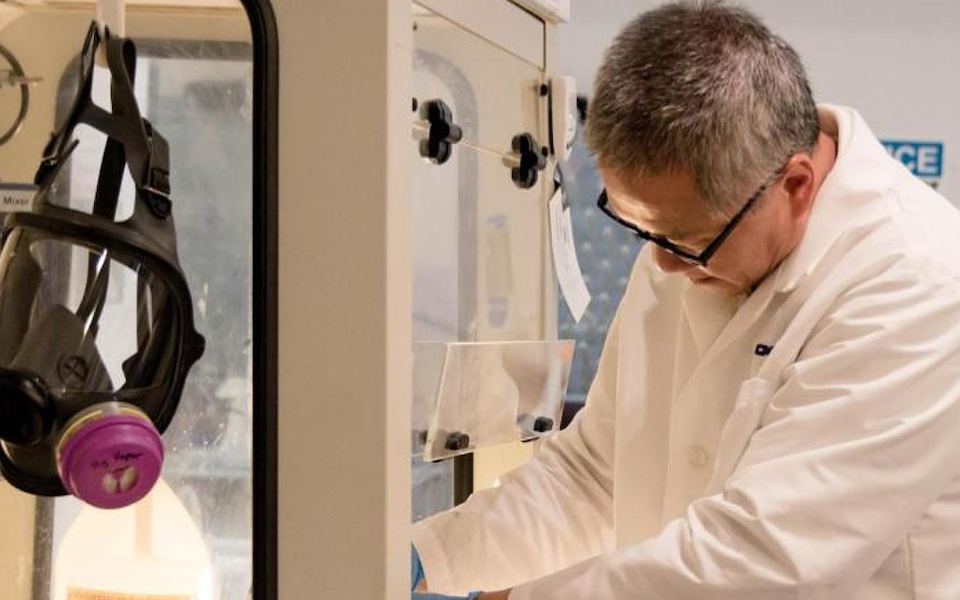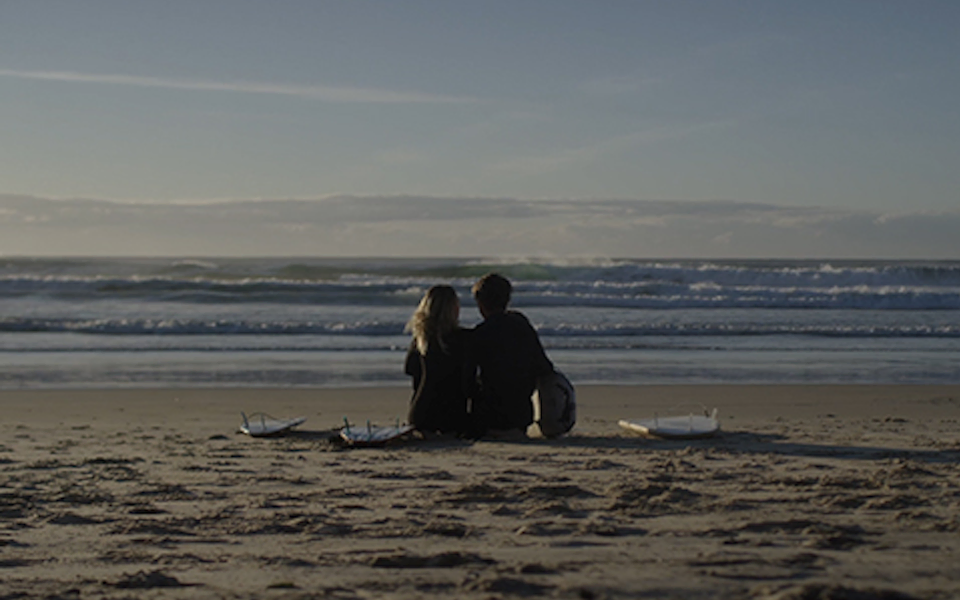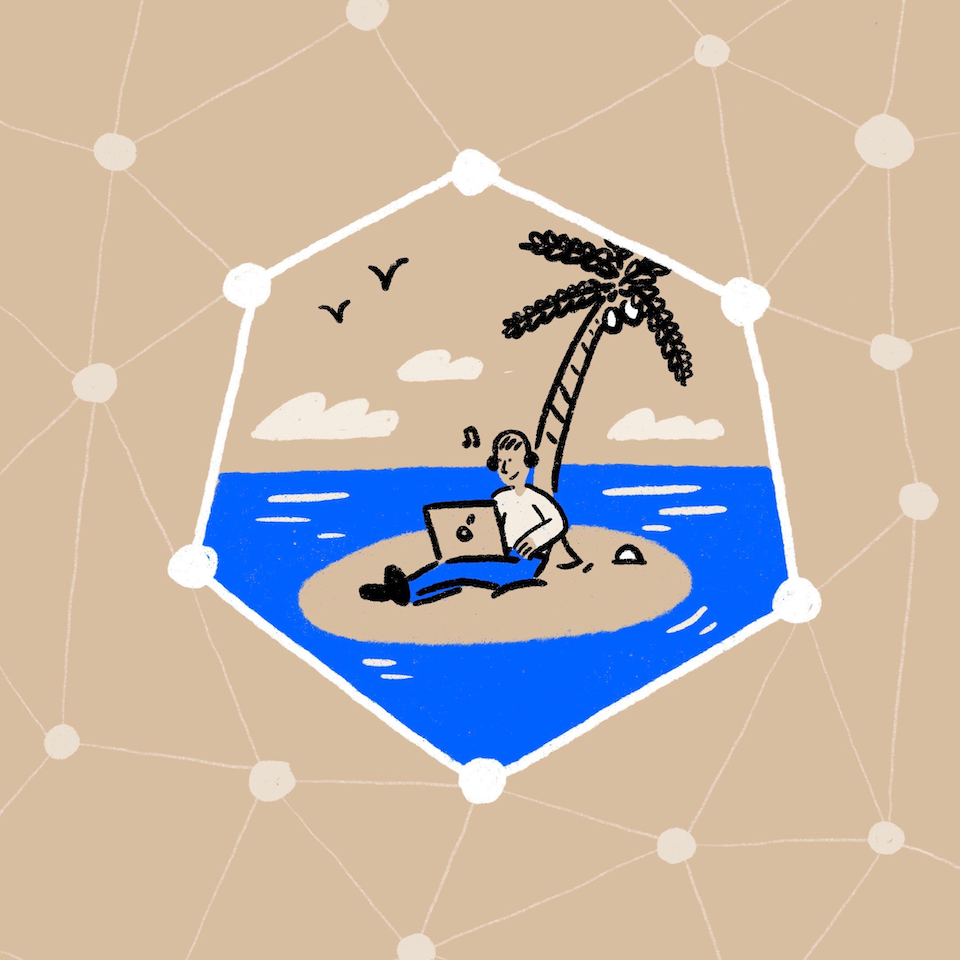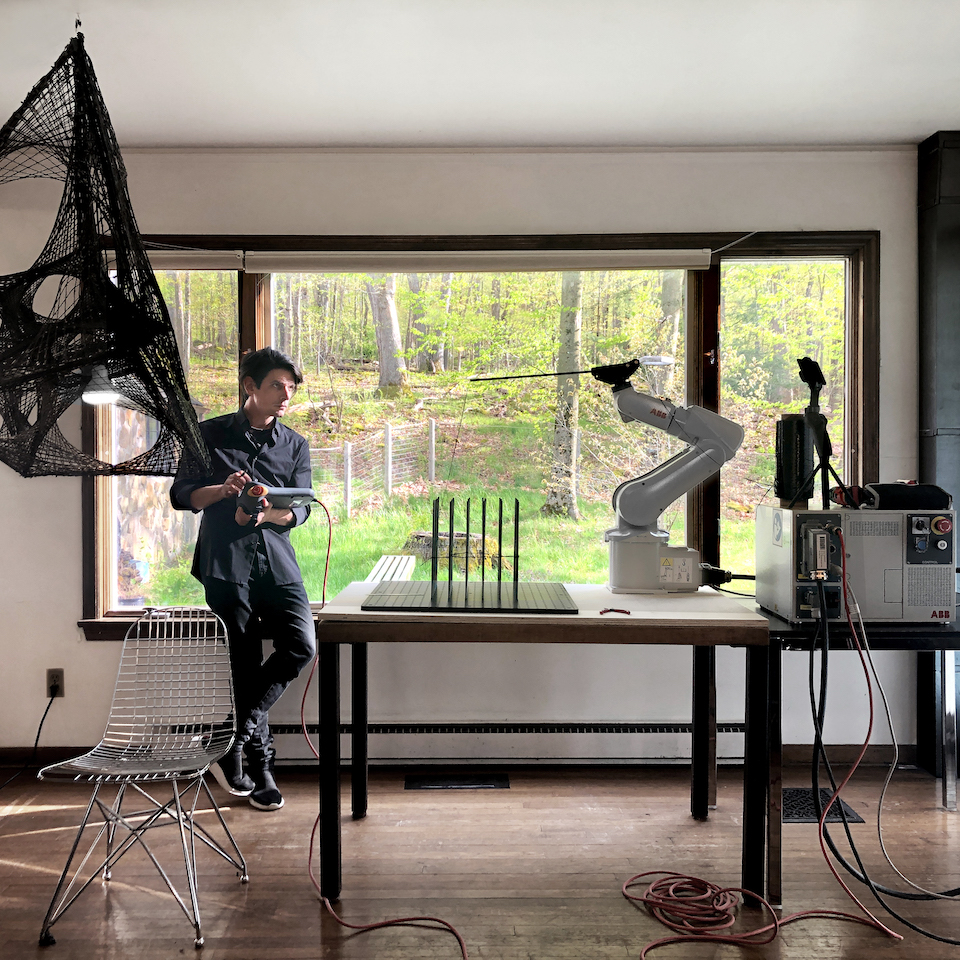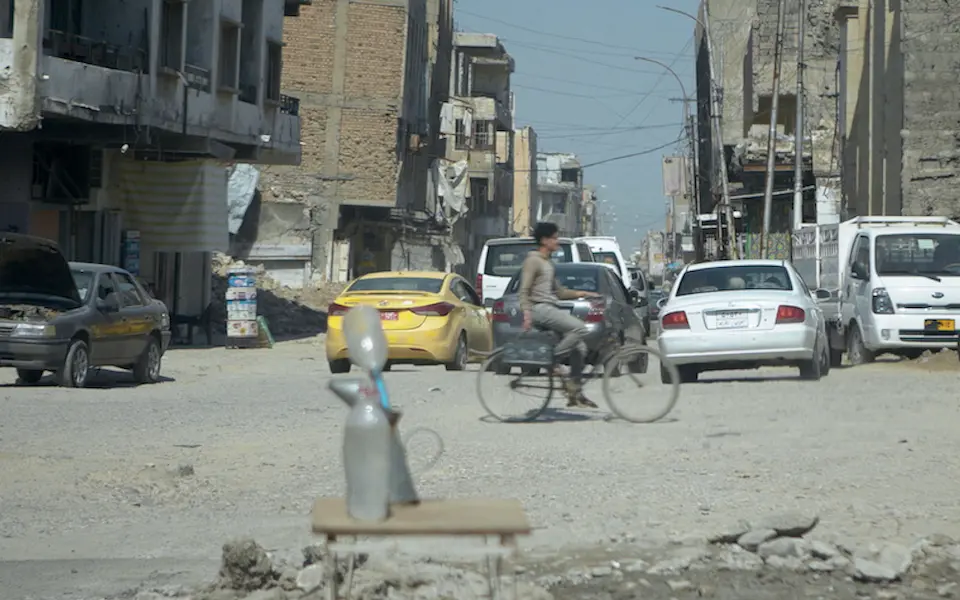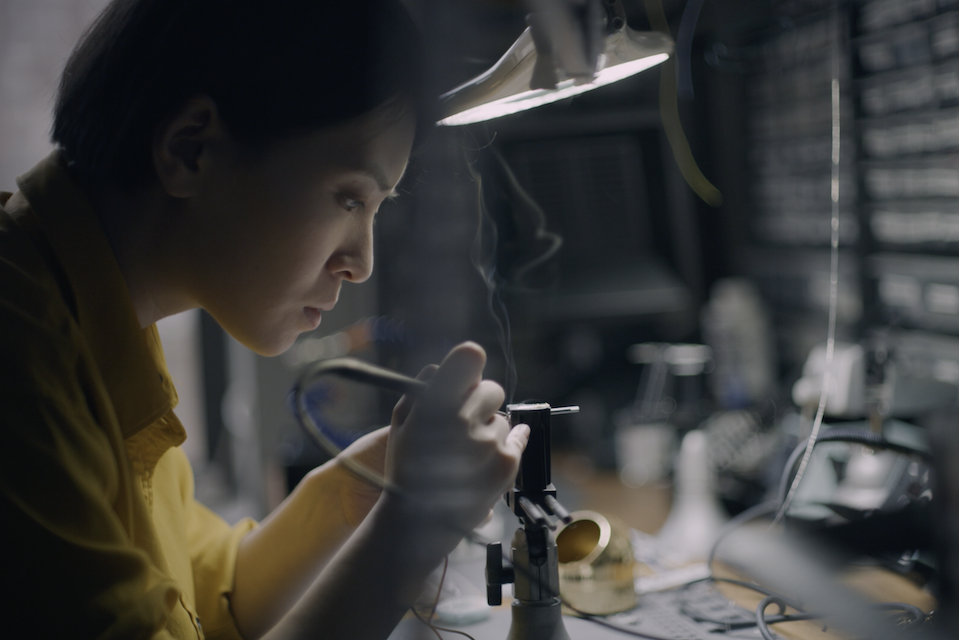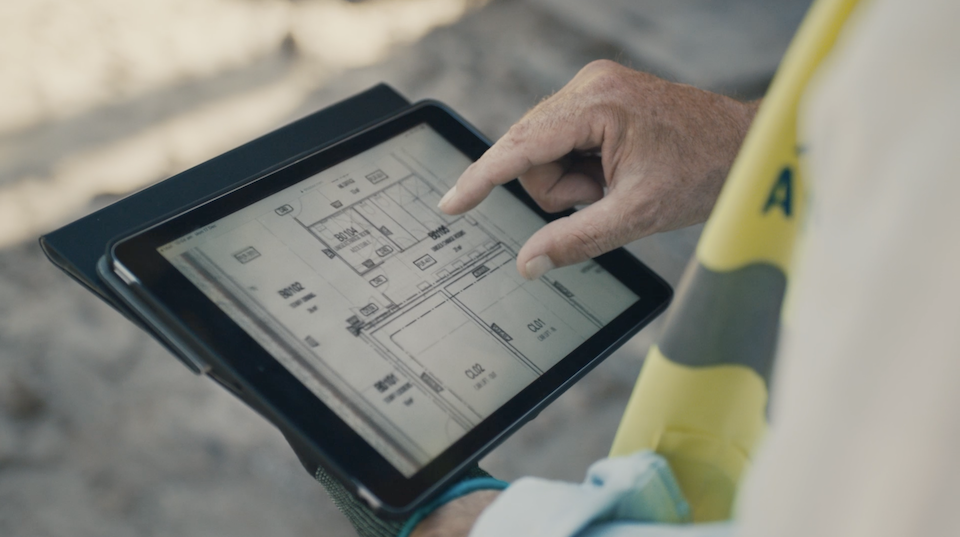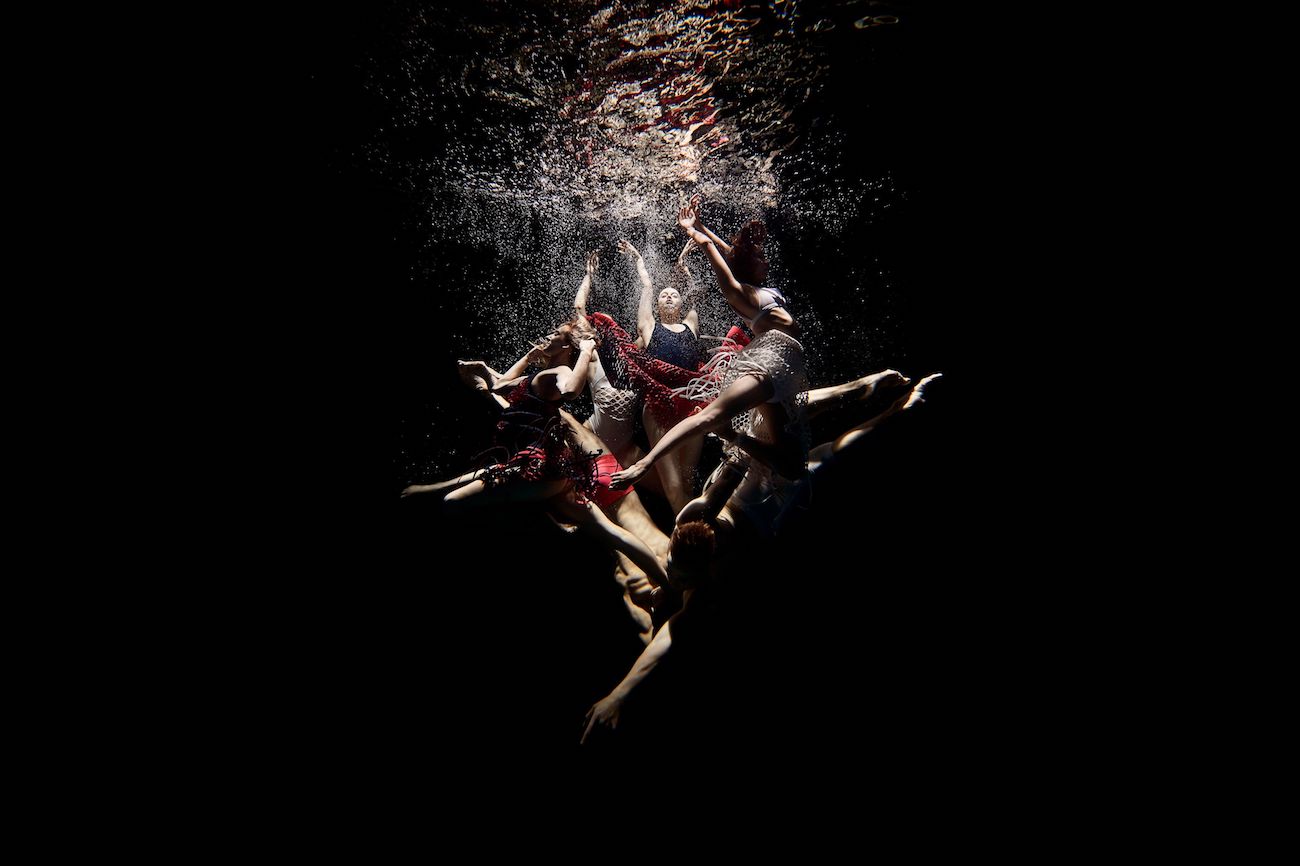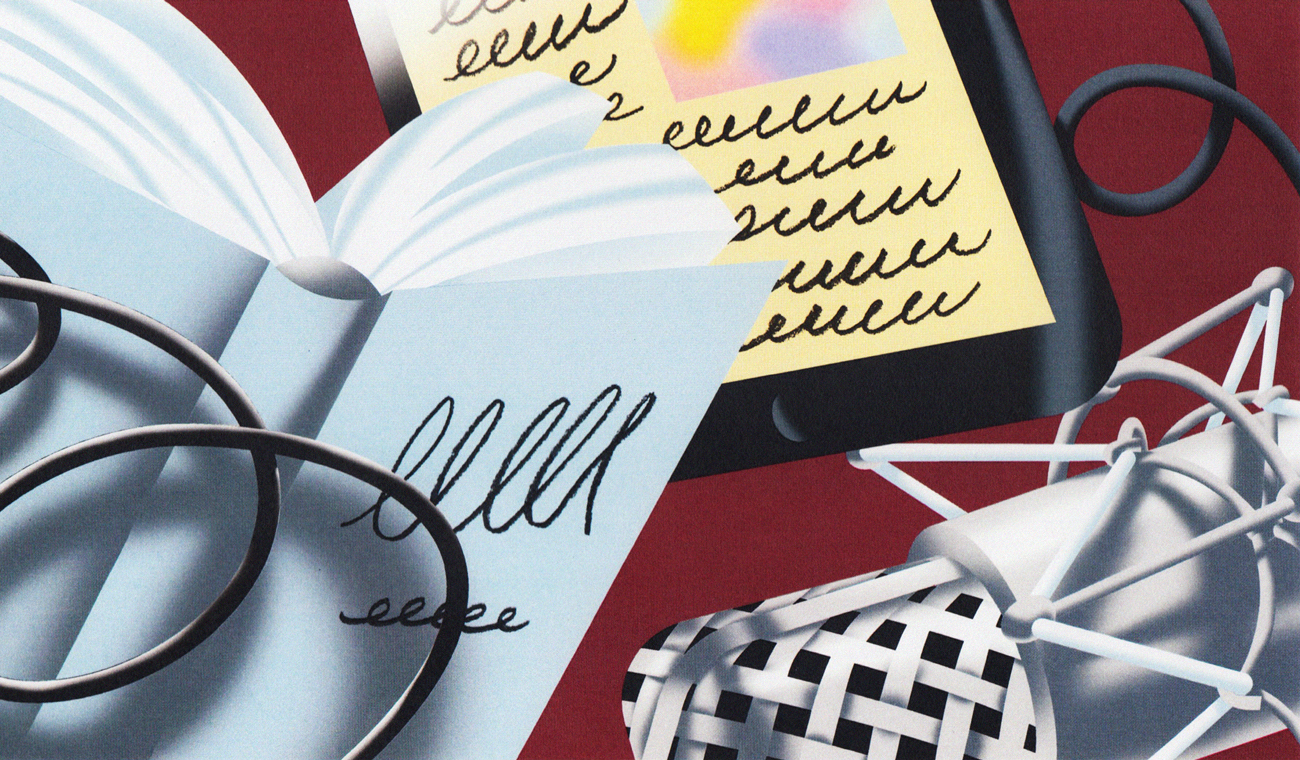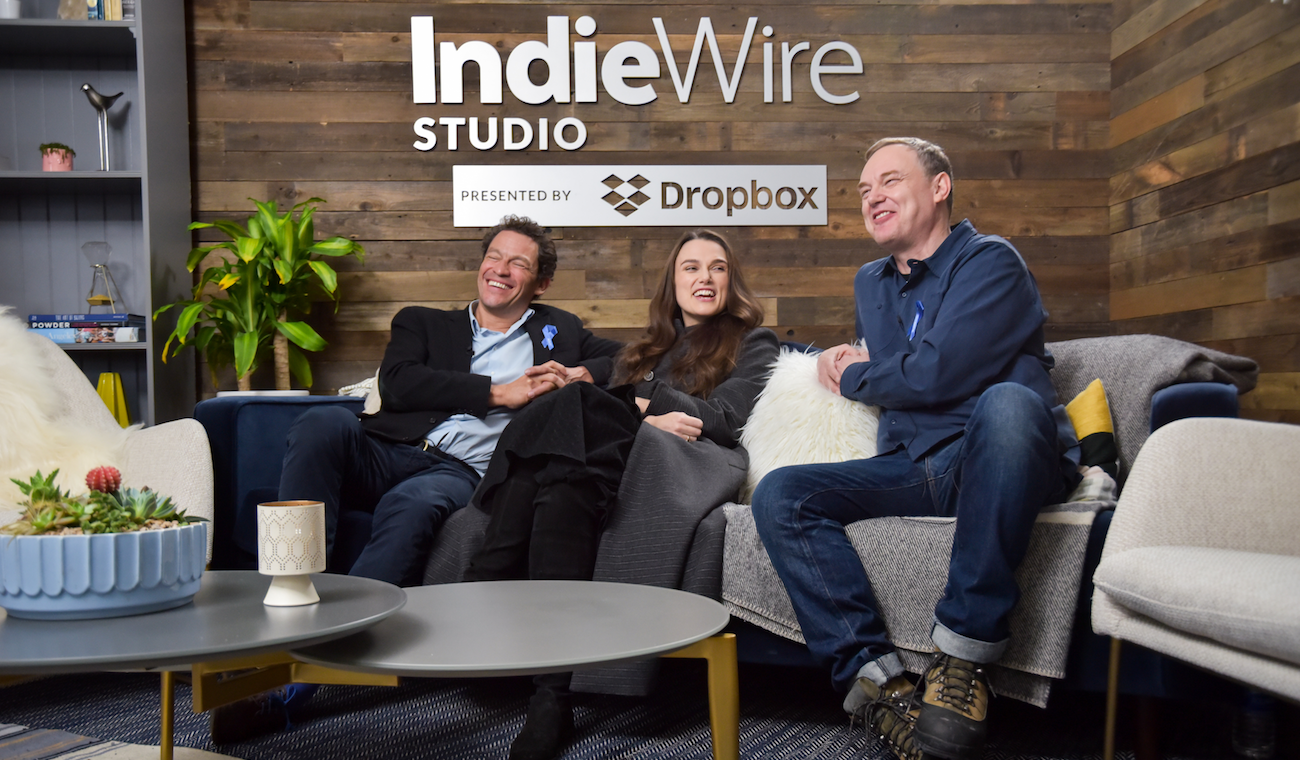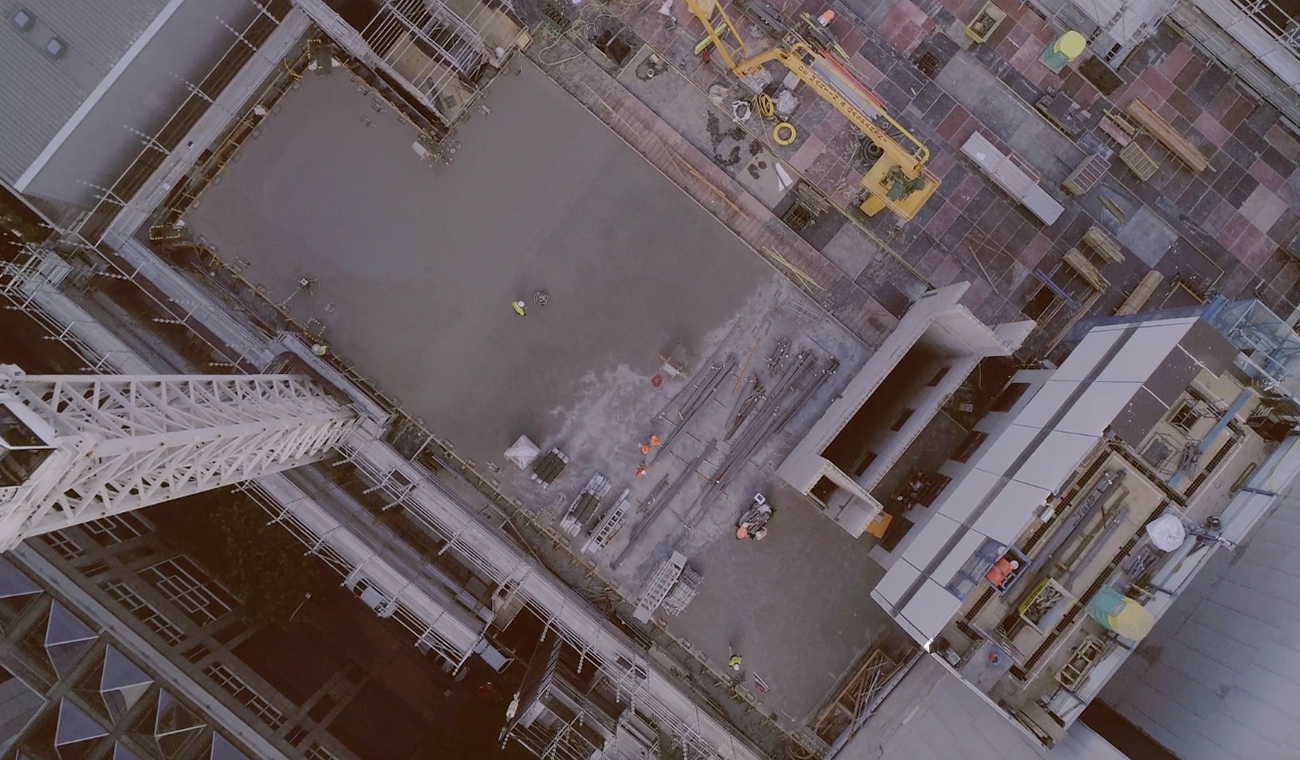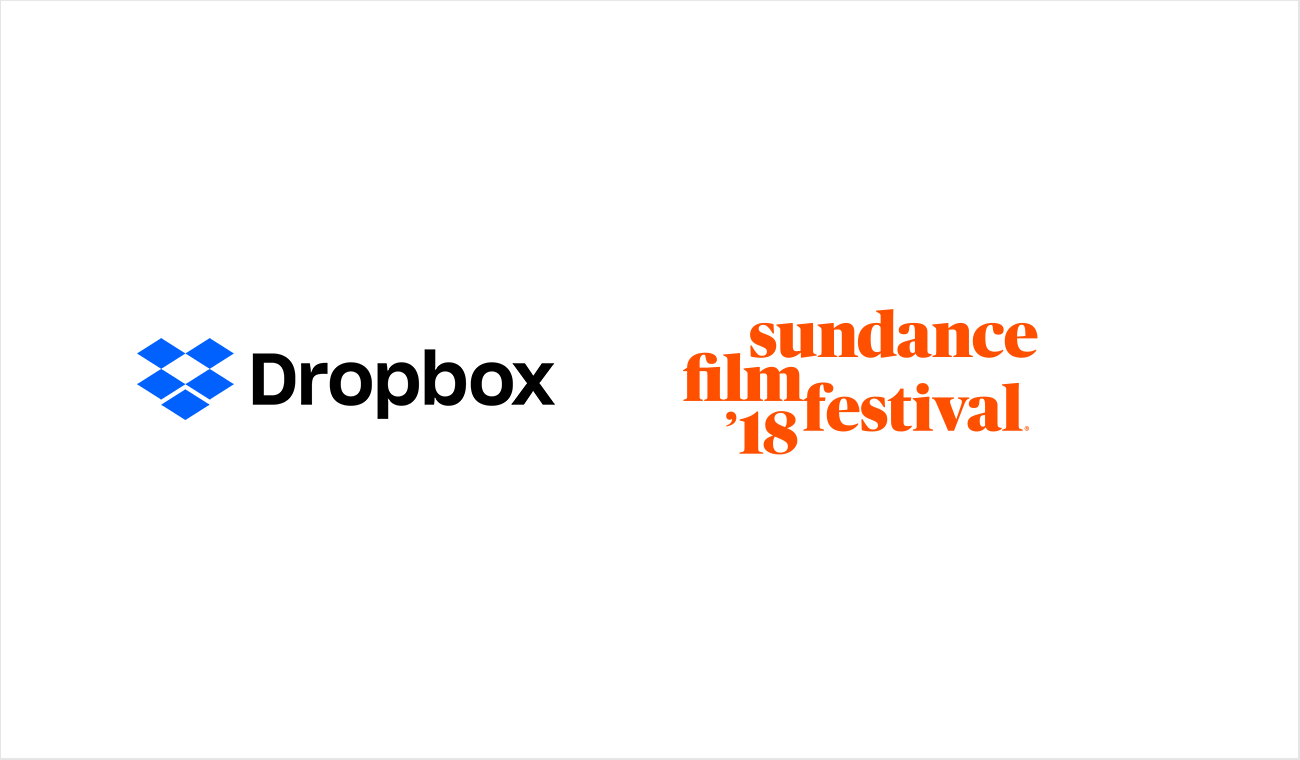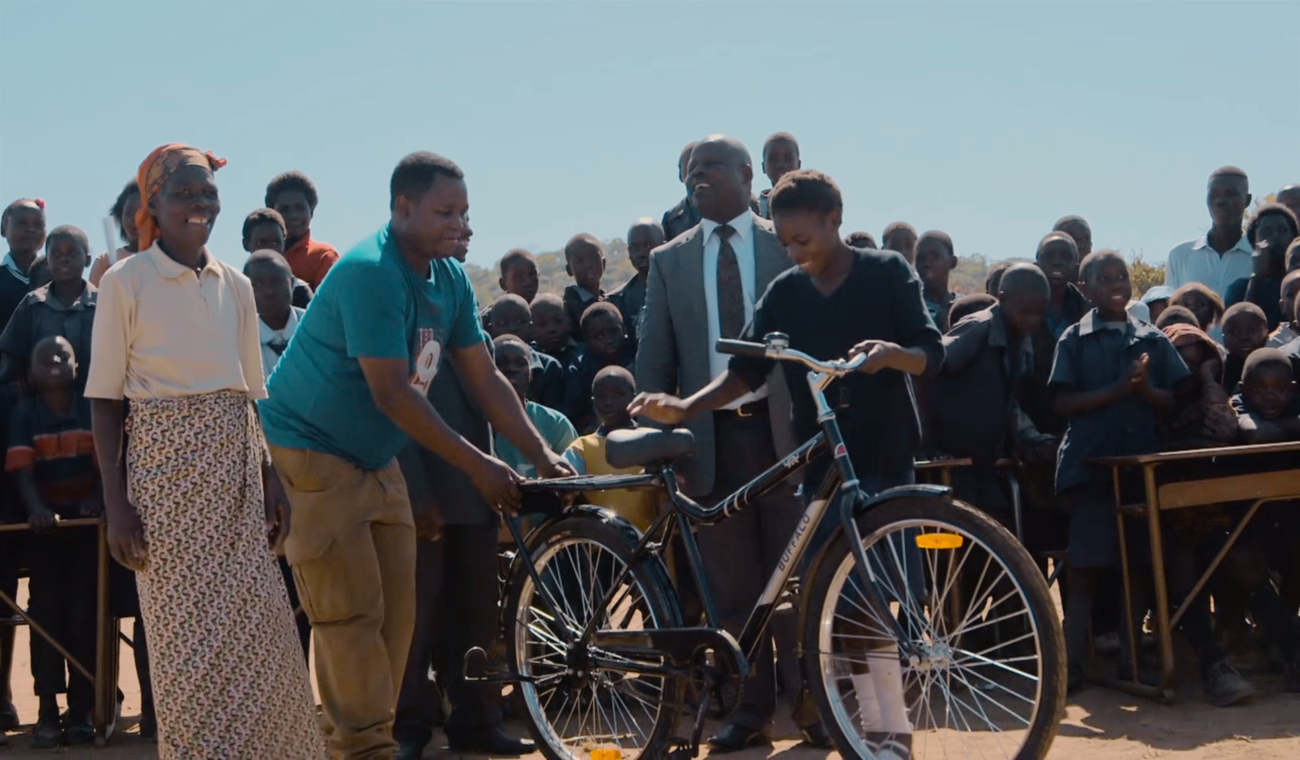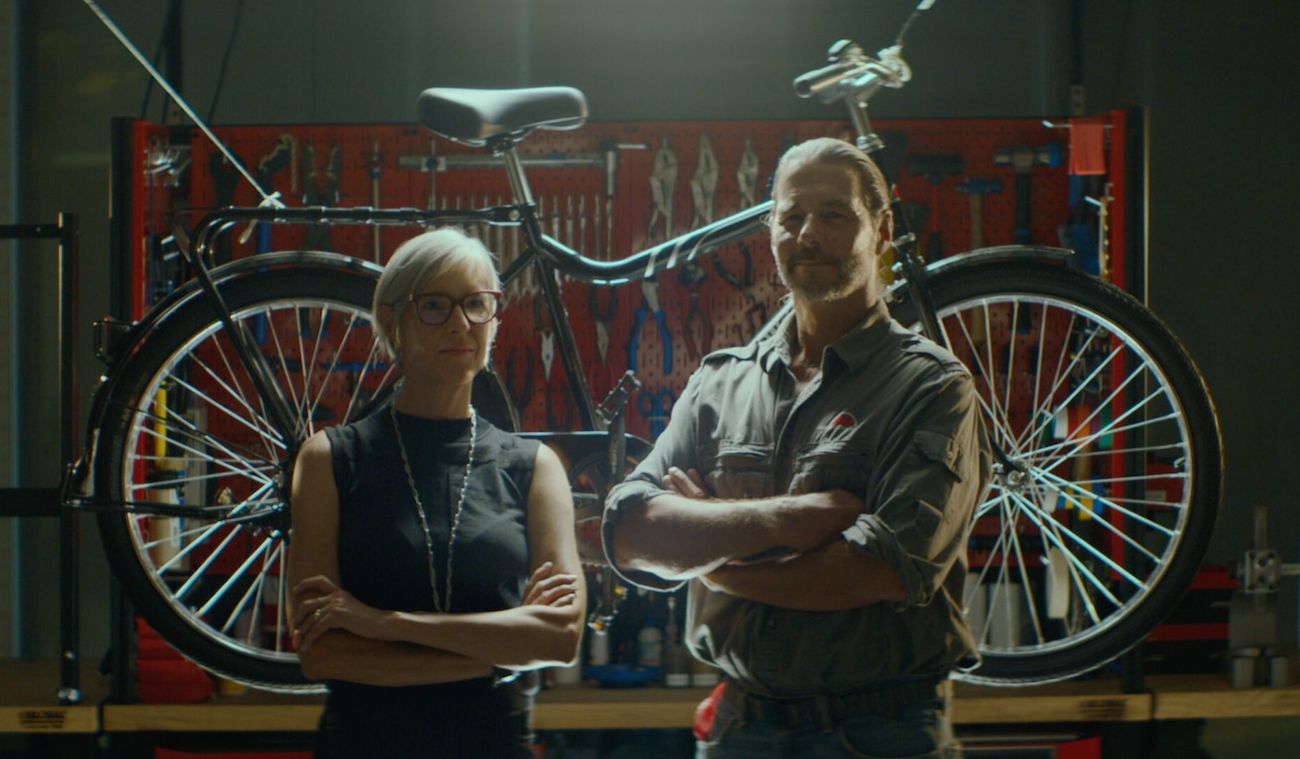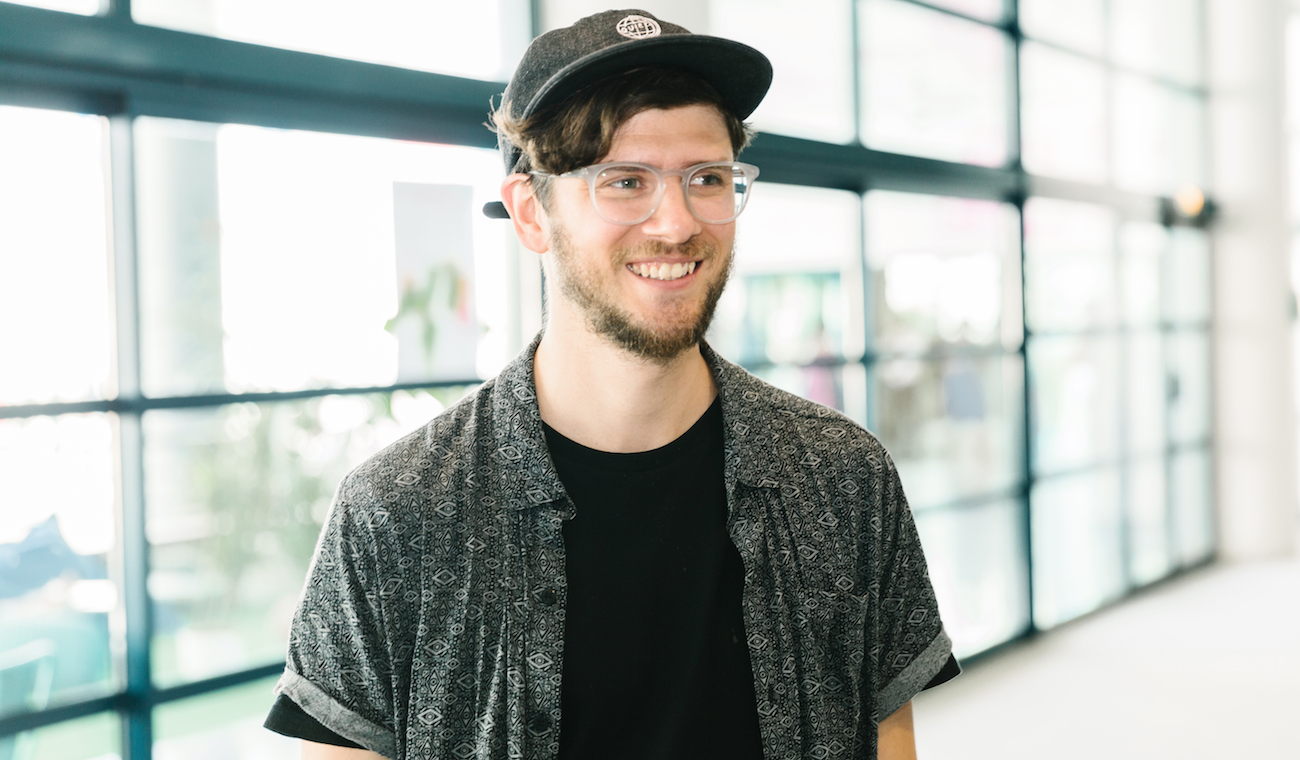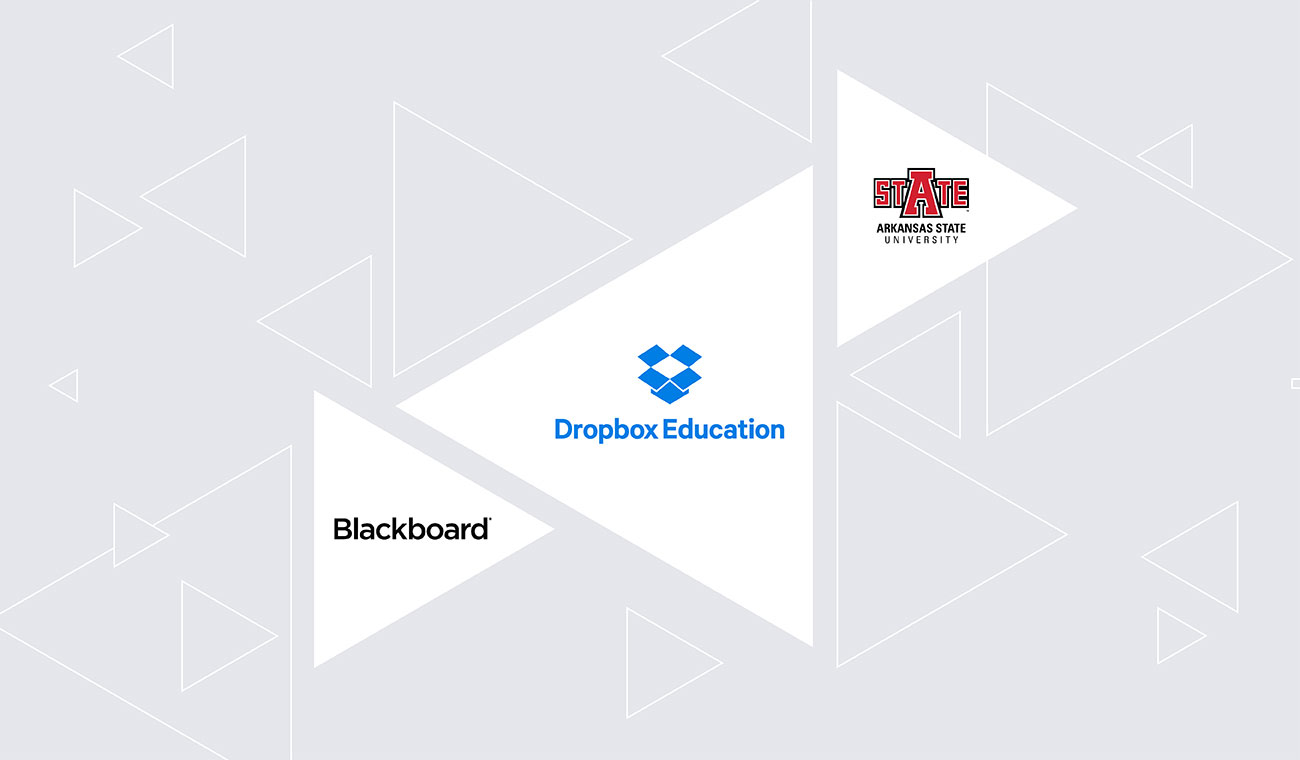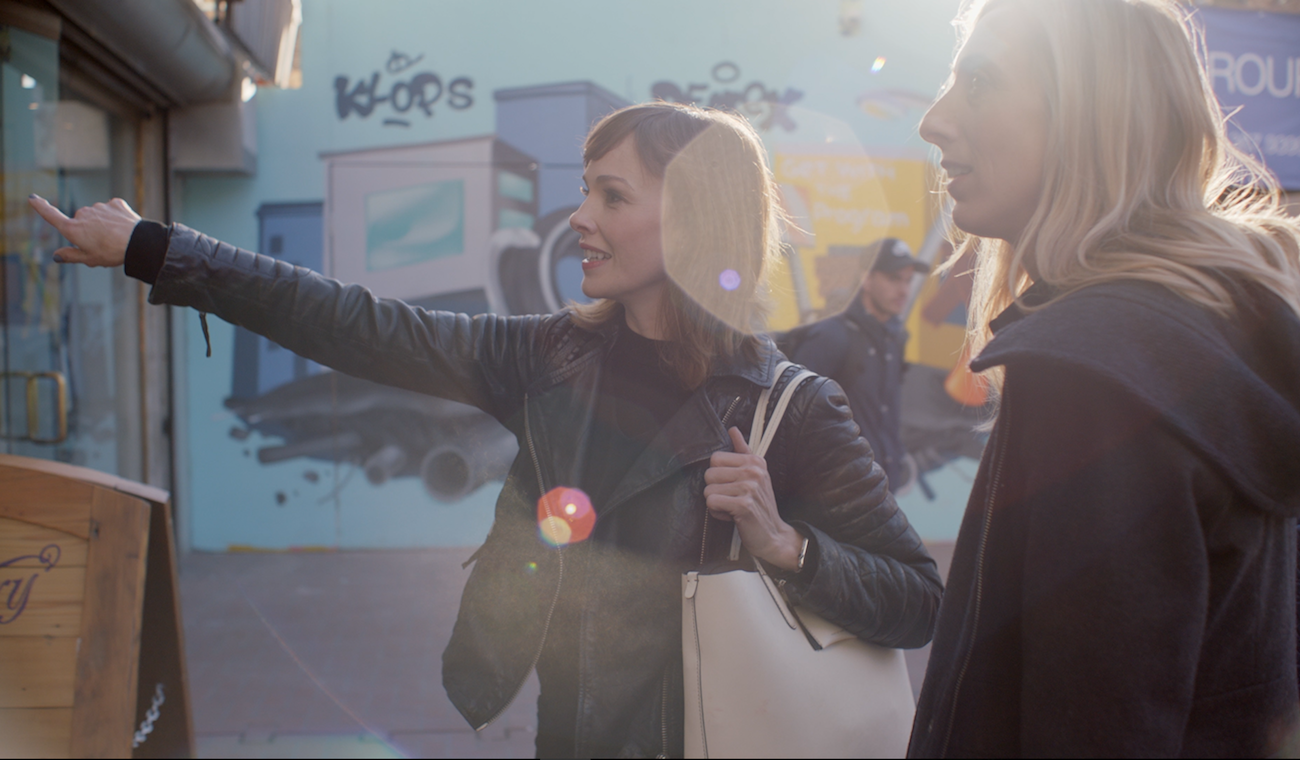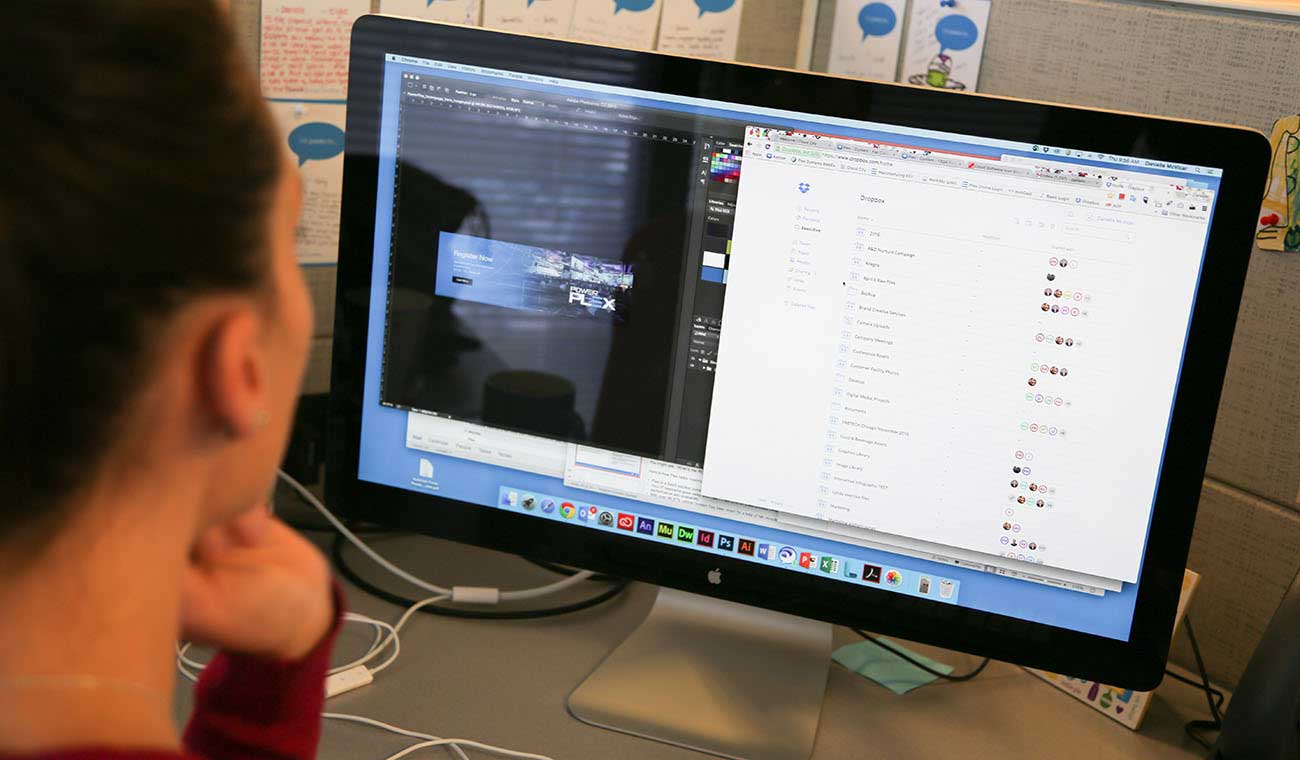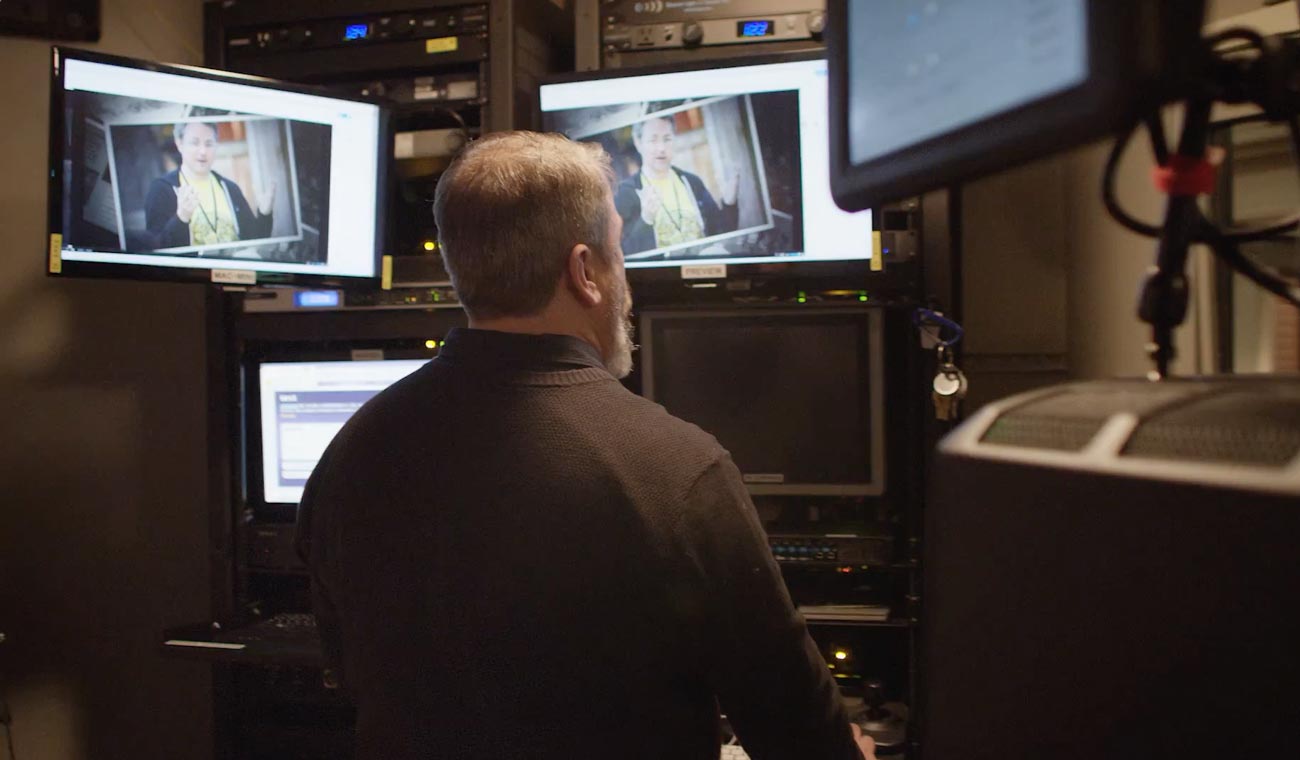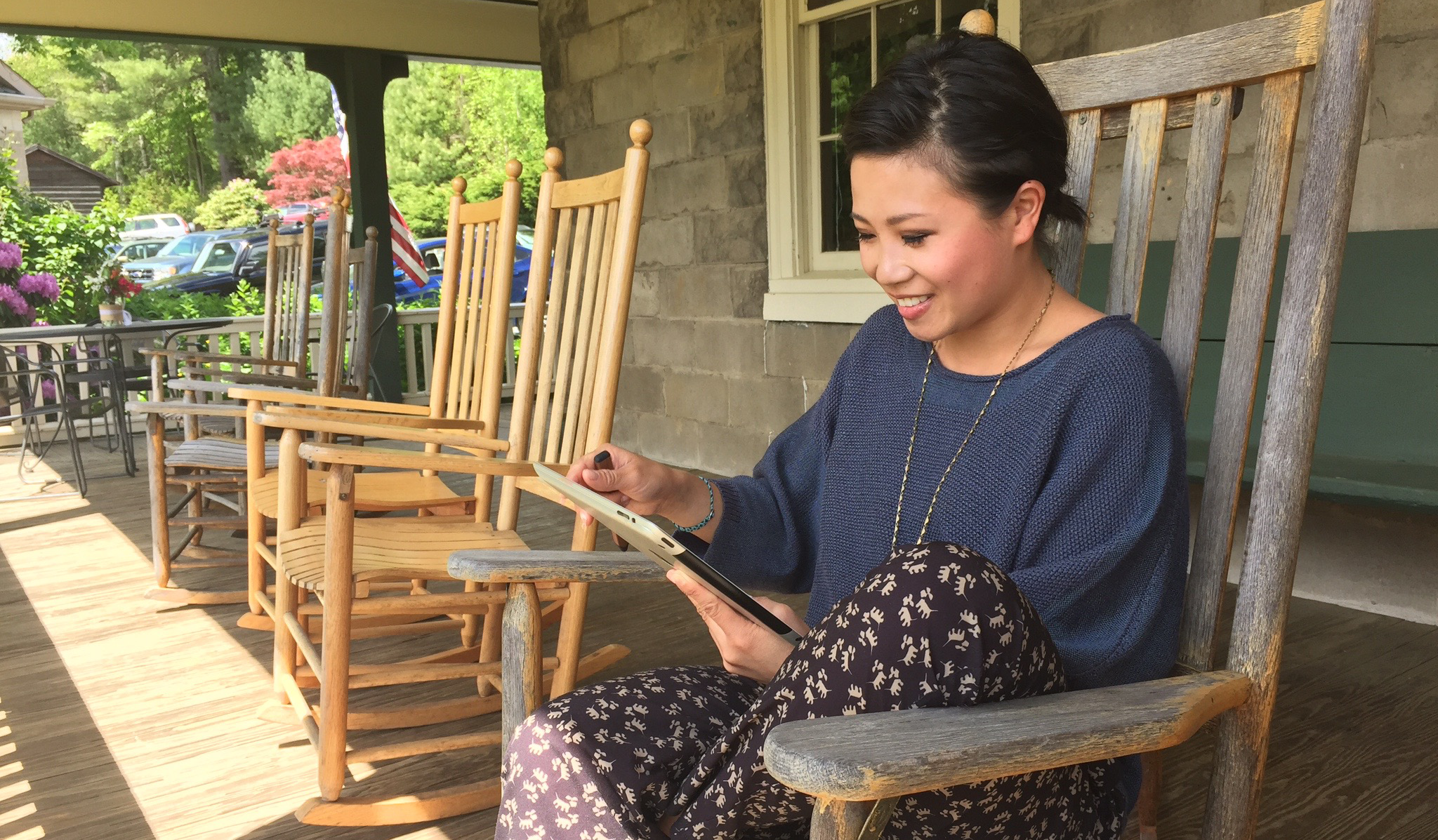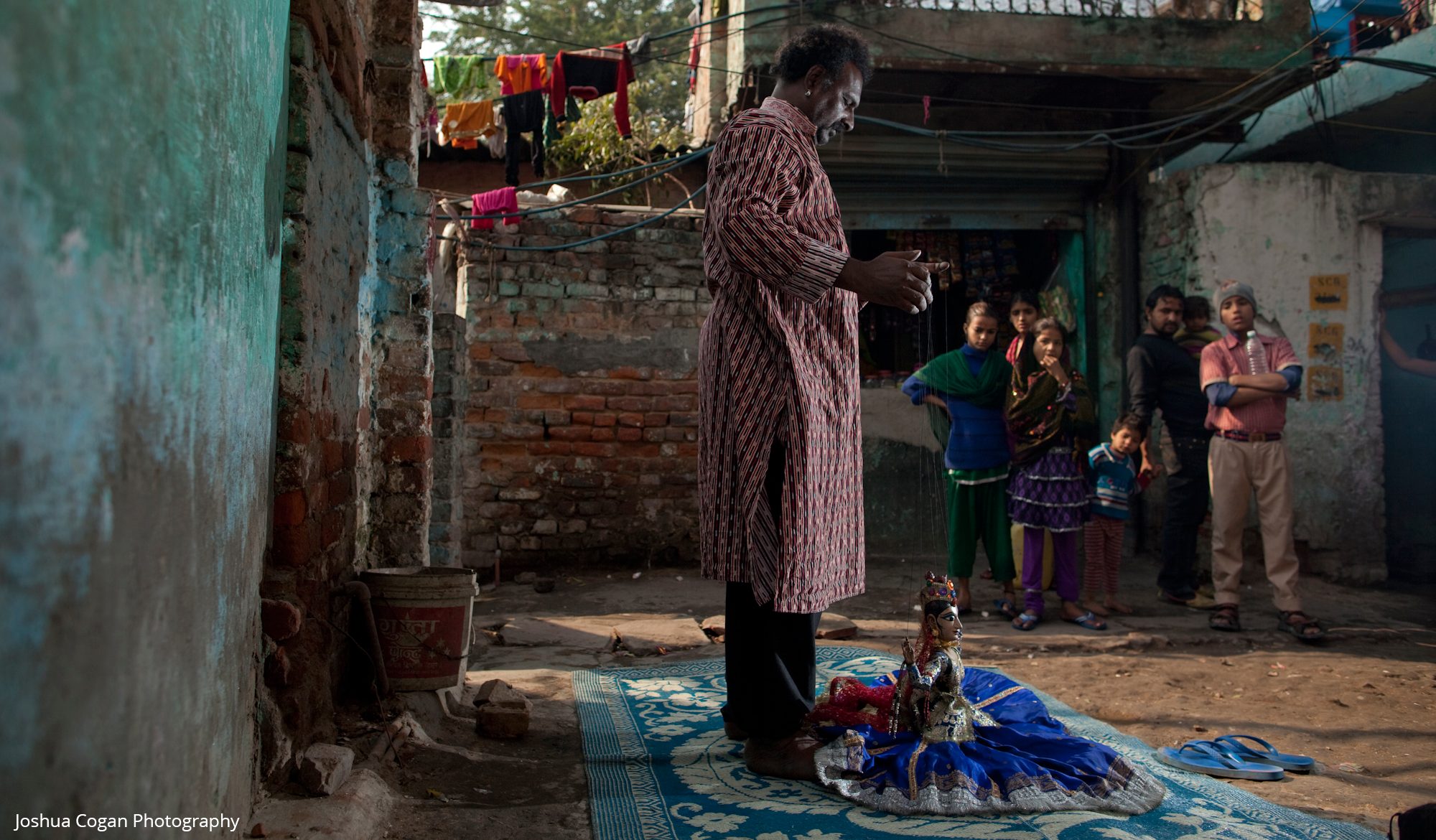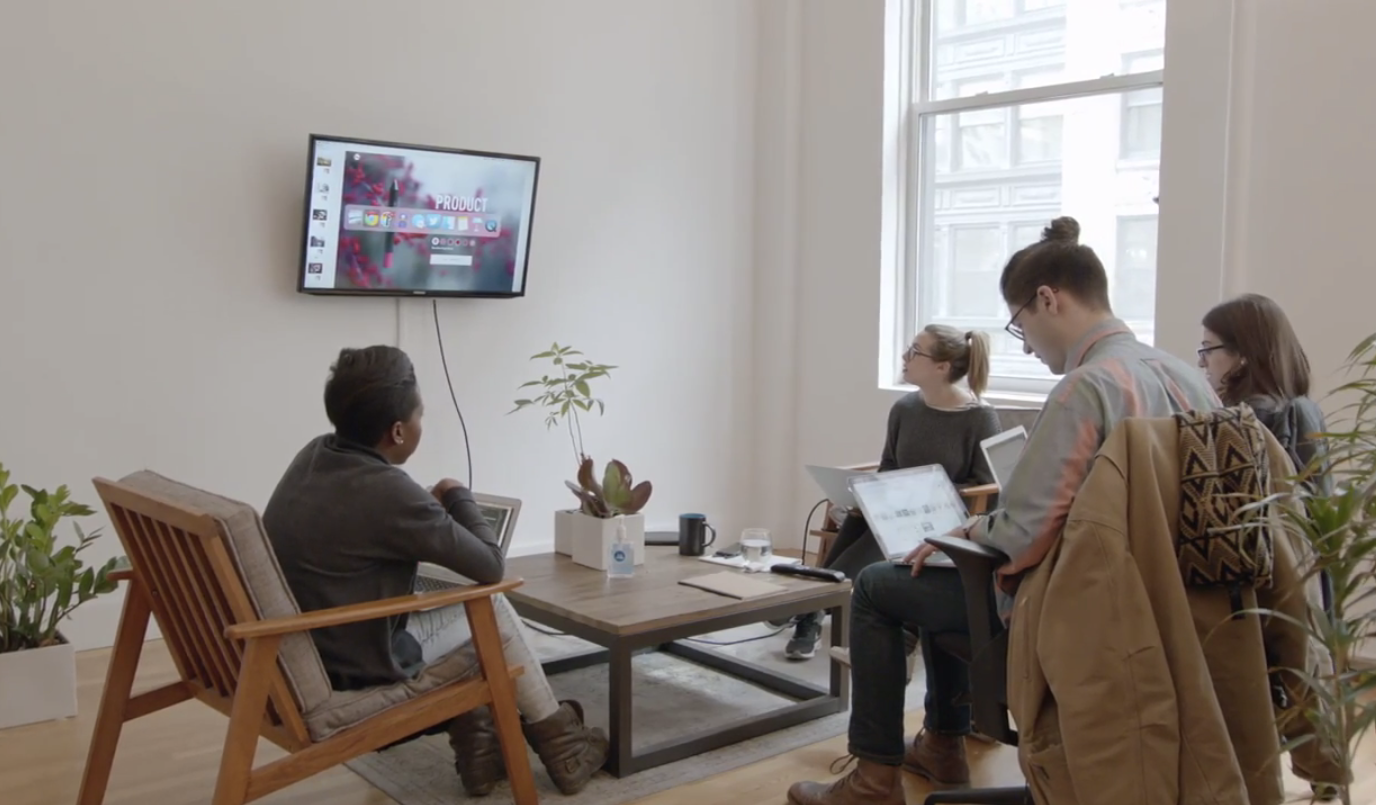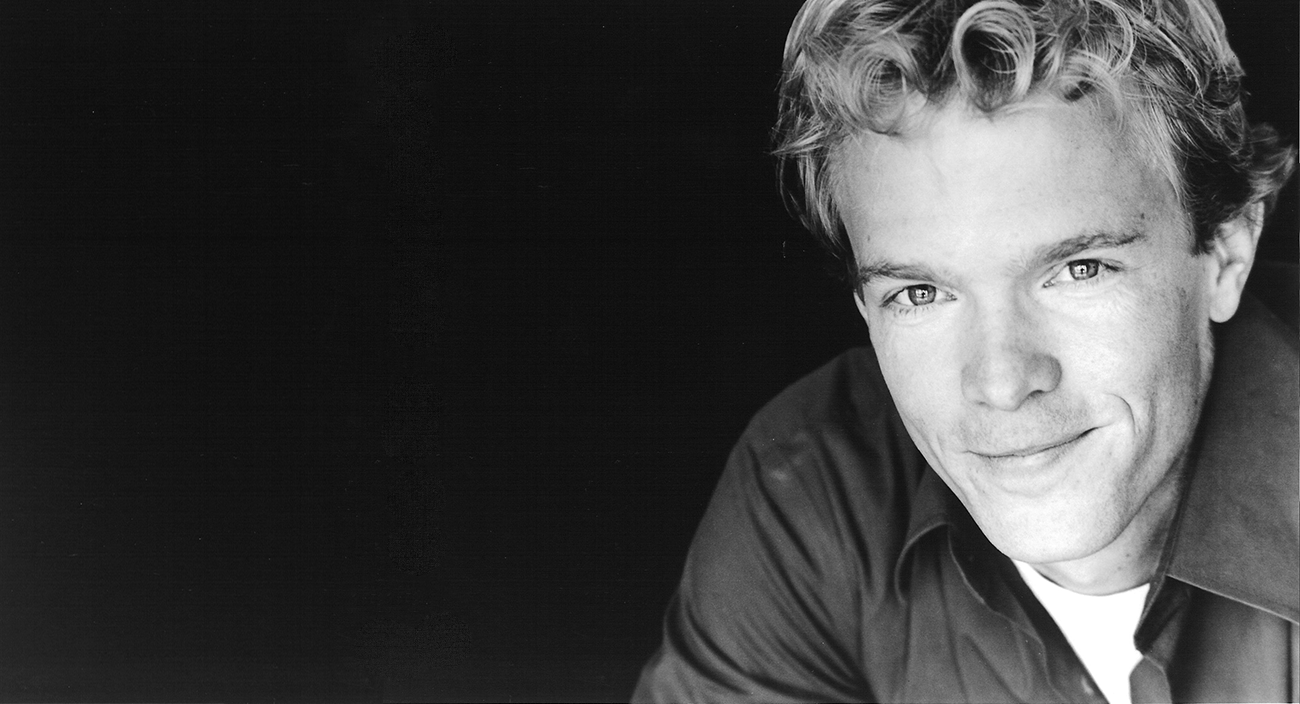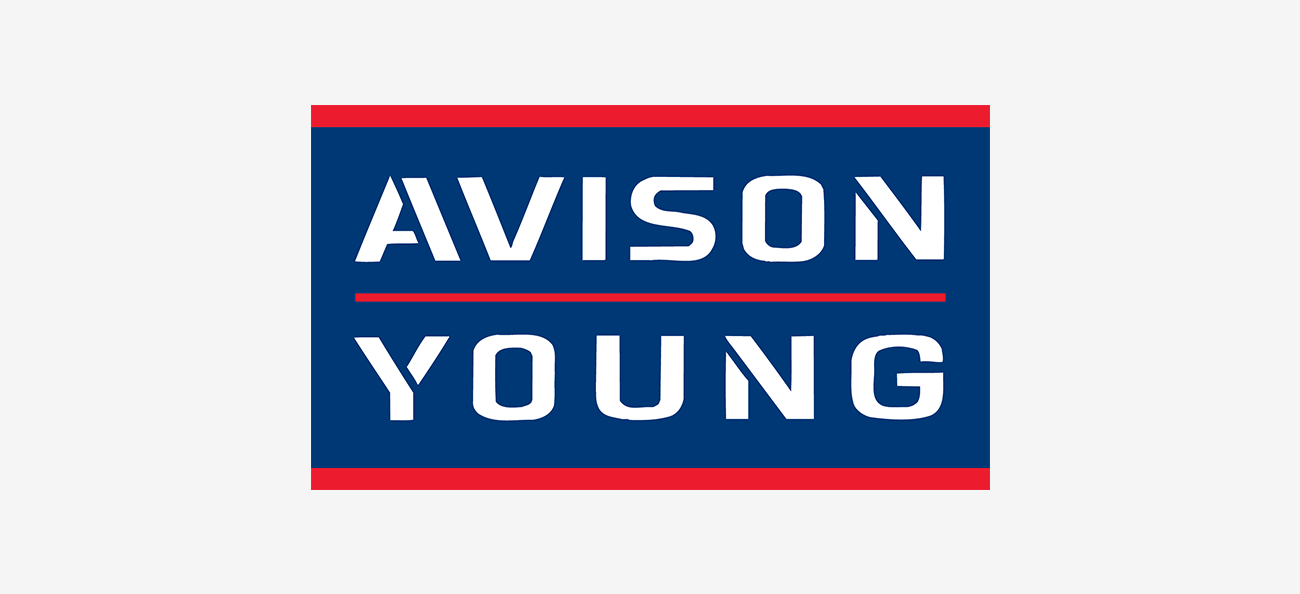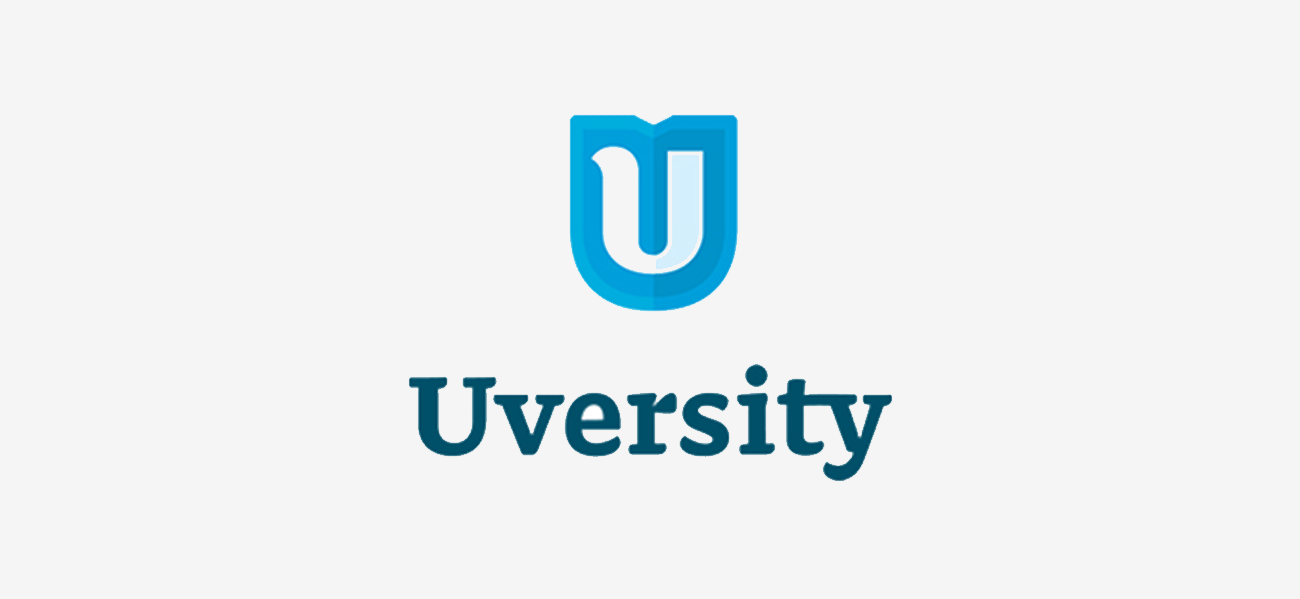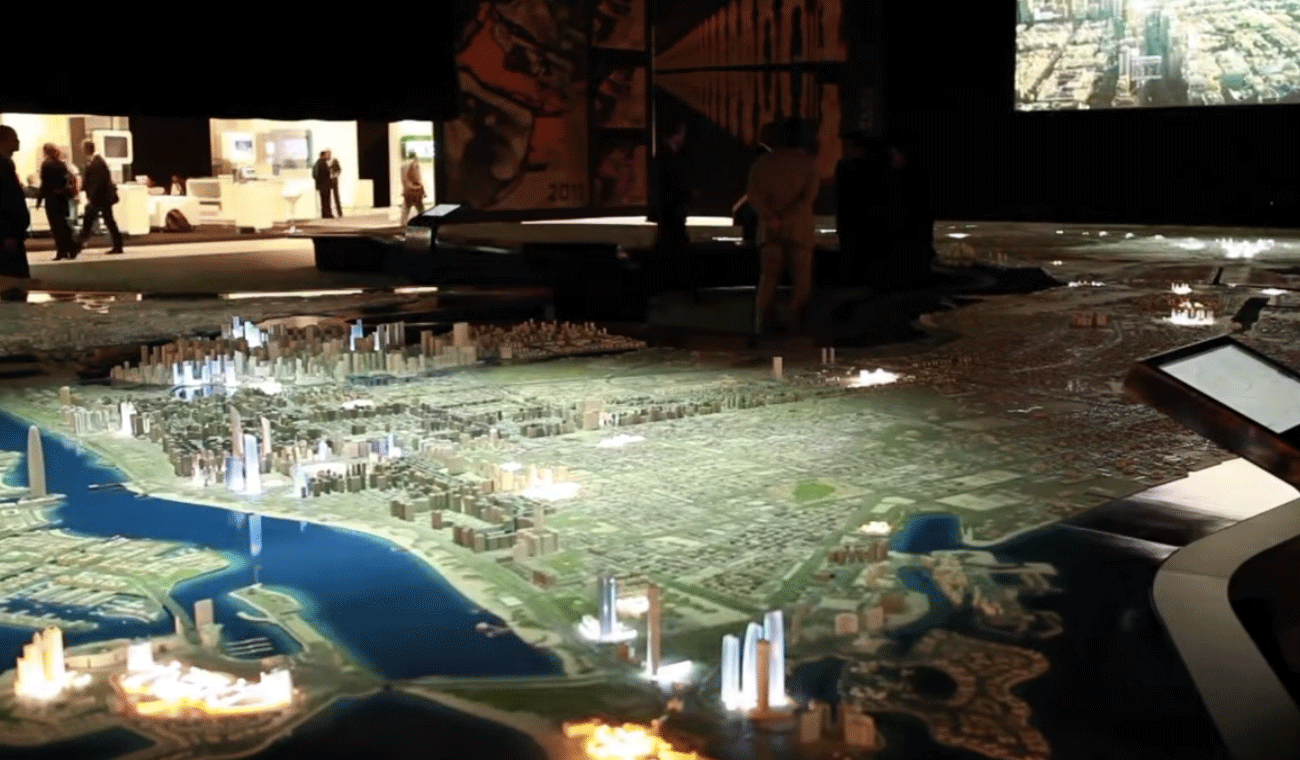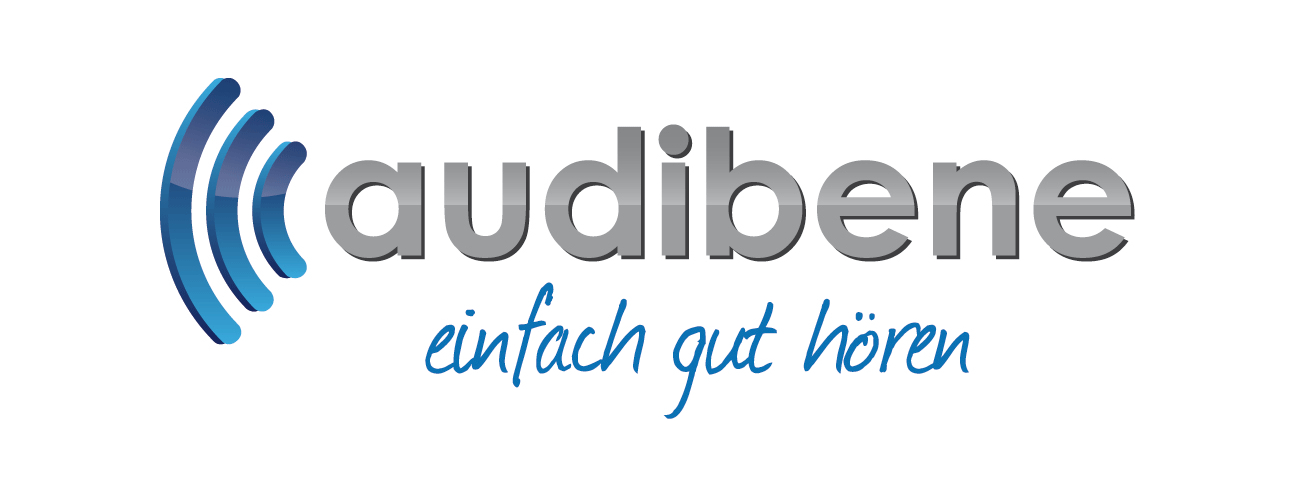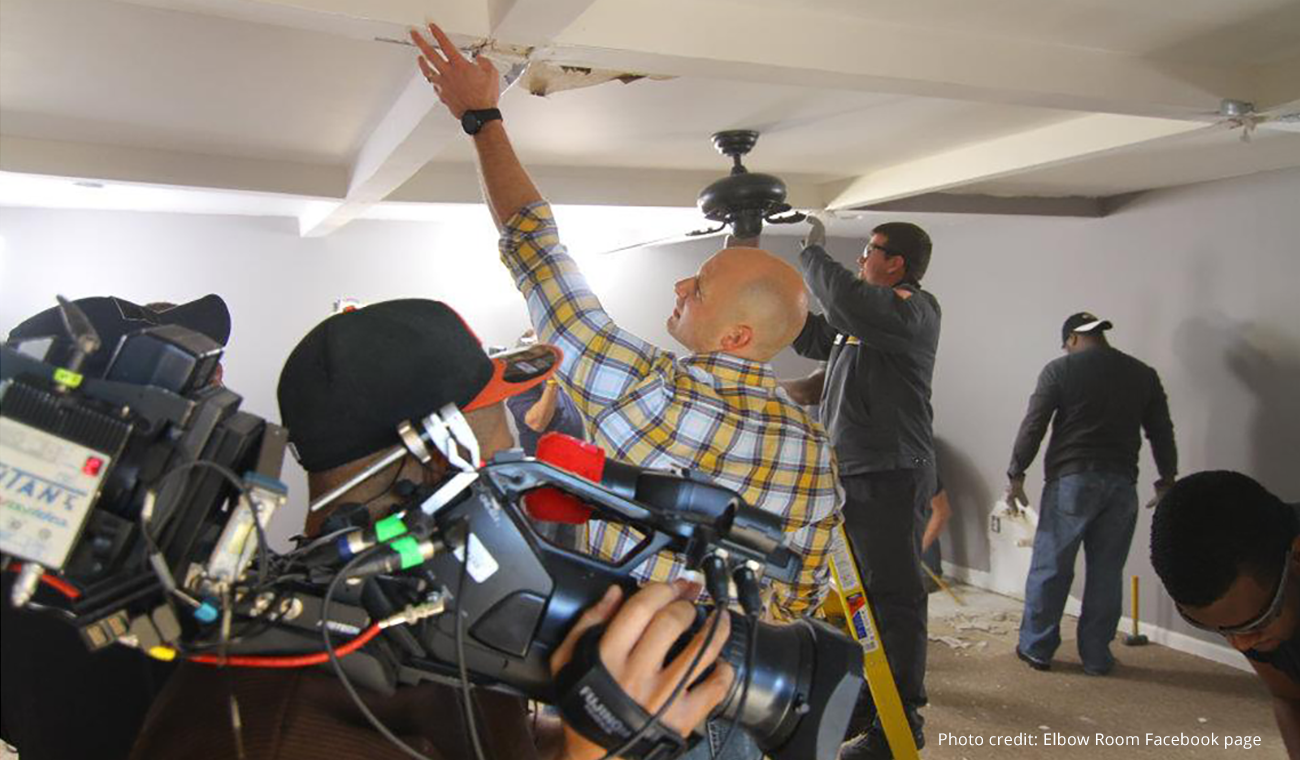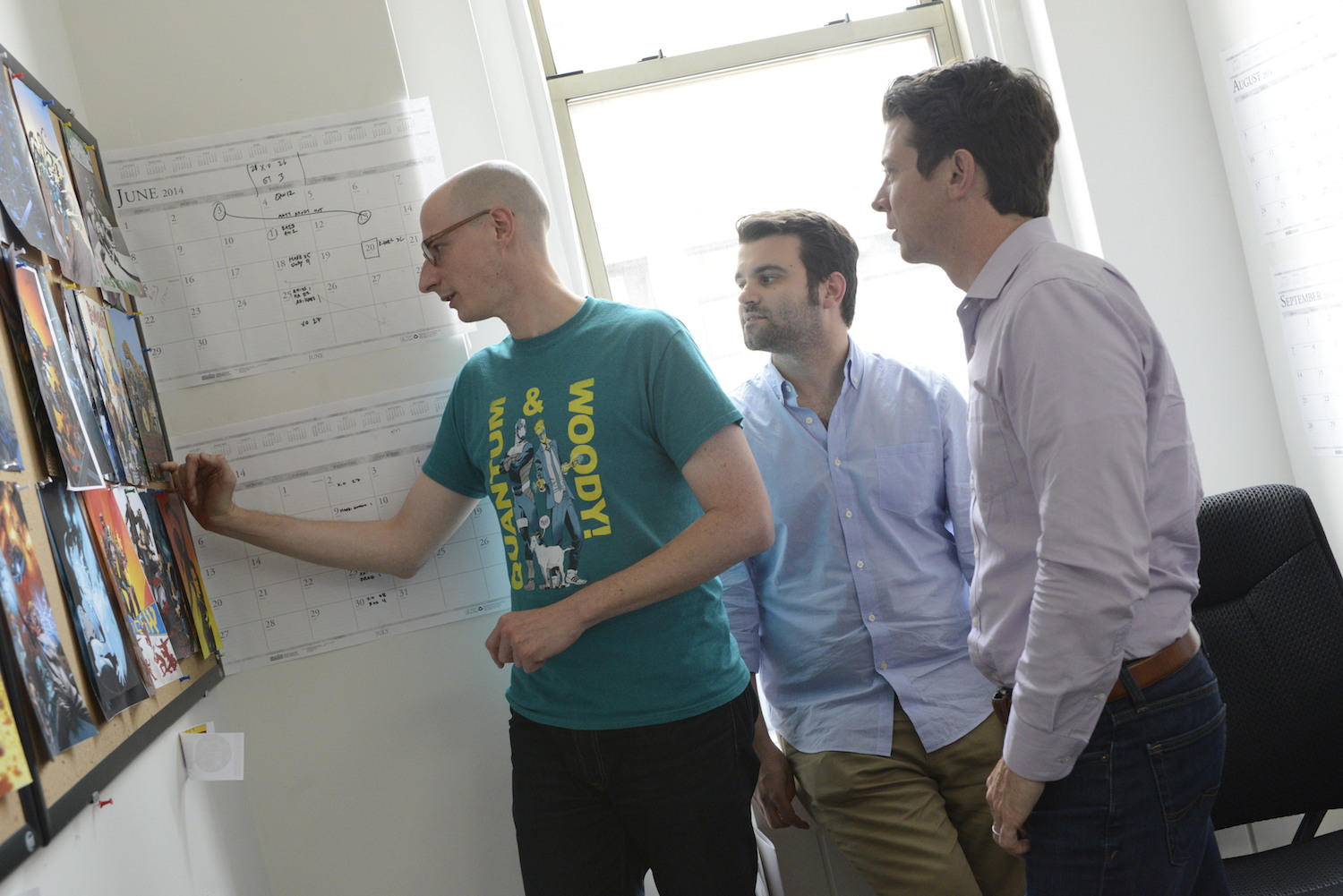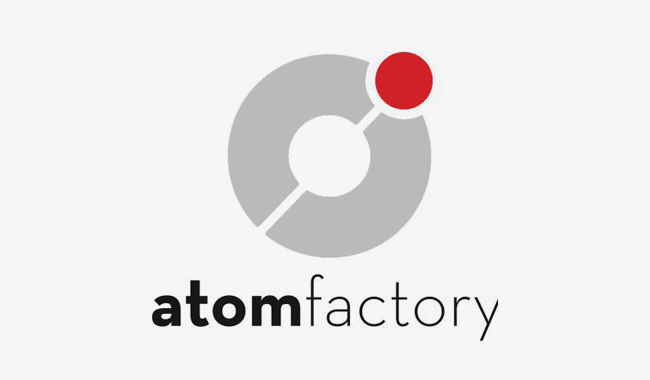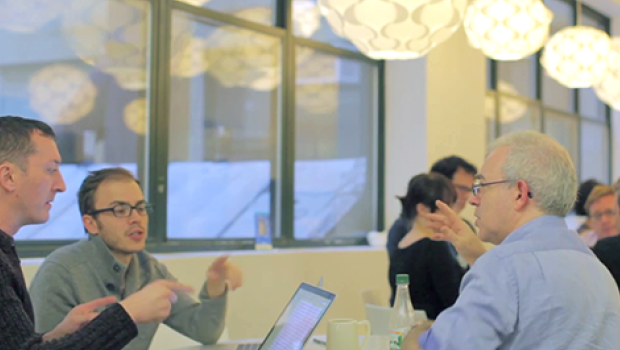
Fandom whisperer: How Campfire creates immersive experiences that feel real
Published on June 14, 2023
From "The Blair Witch" to "Ted Lasso," Campfire has had a hand in many fandoms most memorable IRL moments. So how do they do it?
These days, you can’t swing a selfie stick without hitting an immersive experience. Everything from Van Gogh to ice cream to Friends has been turned into a massive installation. But many end up feeling like Instagram and TikTok traps, more about capturing a geotagged and algorithm-approved shot to prove you were there rather than, you know, having an actual experience.
That wasn’t the case with The Westworld Experience, produced by Campfire, a creative agency in New York City. Based on the HBO series, the experience turned fans into guests of the Wild West theme park populated by lifelike AI-powered robots. Guests were processed and evaluated by Westworld therapists and got to enjoy era-appropriate drinks with hosts in the park’s saloon of ill repute before the violence that soaks the series threatened them all. Now almost six years old—a lifetime for the chronically online—the Comic-Con event is remembered and spoken about reverently for those lucky enough to have gotten a ticket.
That blurring of reality and fandom is a Campfire staple, which isn’t surprising once you realize founder Mike Monello was one of the minds behind The Blair Witch Project. As a refresher, the film practically invented the found-footage horror movie genre in 1999. It (plus the marketing campaign Monello and his creative partners launched ahead of and alongside the movie) left many viewers wondering if what they were seeing were real or not—a culture-defining moment that hadn’t been seen since World of the Wars.

“We were all filmmakers that had done such intense work on the internet, spinning the mythology of the movie online, creating a world, and also building a fandom,” Monello explains. “We realized that there seemed to be a market and a need for an agency that understood fandom.”
They’ve brought that understanding to fans of LEGO and Sonos and properties like Ted Lasso, Game of Thrones, and The Man In The High Castle. The throughline in all the Emmy award-winning outfit's projects is the desire to tell deeply human stories. (It’s in the name—part of a good campfire is the stories that get told around it.)
“It’s almost like we’re creating a stage for fans to walk out on and write their own parts,” says Campfire creative director Steve Coulson.
That’s part of what makes Campfire stand out: Rather than dictating a story, they give fans an opportunity to create their own, using “invisible technology” like Dropbox to make it all possible. We talked to Monello, Coulson, and Campfire’s business development director Mike Knowlton about the mental and technological frameworks they use to create experiences that pull fans through the looking glass again and again.
In your decades-spanning work, you’ve found that there are different layers in fan communities. What is the taxonomy of fandom as you see it?
Steve Coulson: We call it Skimmers, Dippers, and Divers, and it’s more about how much you as a fan want to get involved.
If you imagine an upside-down pyramid, Skimmers are at the top. A Skimmer has a passing interest; they make up the biggest percentage, but they’re the least engaged. Then at the tip of the pyramid, there’s the Divers, and these are the hardcore fans, they’re the people who cosplay—anything you give them, they’ll peel it apart for authenticity. Divers are a really small part of your audience, but they do have a disproportionate impact because they’re the evangelists. The middle layer are the Dippers—they will engage, will tell their friends about it, will discuss it on social. They’re not as hardcore, but they want to participate.
When we design experiences, we want to make sure that we’re creating things that all three of those strata will respond to, but especially the Dippers. It’s easy to do something too deep for them or too shallow that it won’t give them the tools to share.
How do you create something that lands with the dippers, but also has the ability to cross those different strata? You don’t have to give us the cheat codes, but you can if you want!
Coulson: The key is to start from the dipper layer. We want to give somebody something that they’ll enjoy, but they don’t really need to do homework to enjoy. But then we’ll go back and go, What Easter eggs can we hide in plain sight? We don’t want it to be distracting or for it to become hieroglyphs on the wall that people need to decipher to move forward.
We did an experience a few years ago for The Purge TV show. It was a store where we gave you some dollars…
Mike Knowlton: Purge Bucks! (laughter)
Coulson: … and you went in to get Purge supplies. We sold seed packets because part of the story is that you plant these blue flowers to celebrate the Purge. But if you take the seed packet and look at it, there’s instructions for what season you should plant to be ready for Purge Night and how you should plant them and what the ceremony is. It’s like the fine print on the back of the seeds. And that’s a diver Easter-egg moment that most people will ignore. But if you know, you know.
Knowlton: We also embrace this idea of “Thinking like a forger.” When a forger makes a work, they don’t just copy the artwork. They’re making sure that the frame is made of wood from the period, that the oils that are used aren’t modern. There’s a really high attention to detail to create that perfect forgery. So we’re trying to think like forgers when we create these experiences that bring fans into these beloved story worlds.
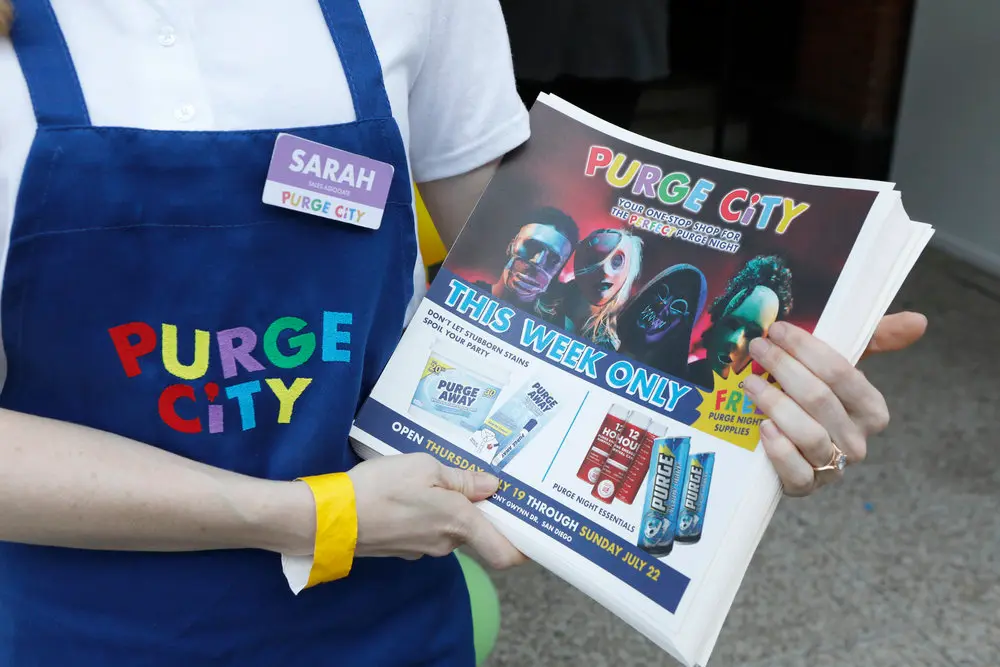
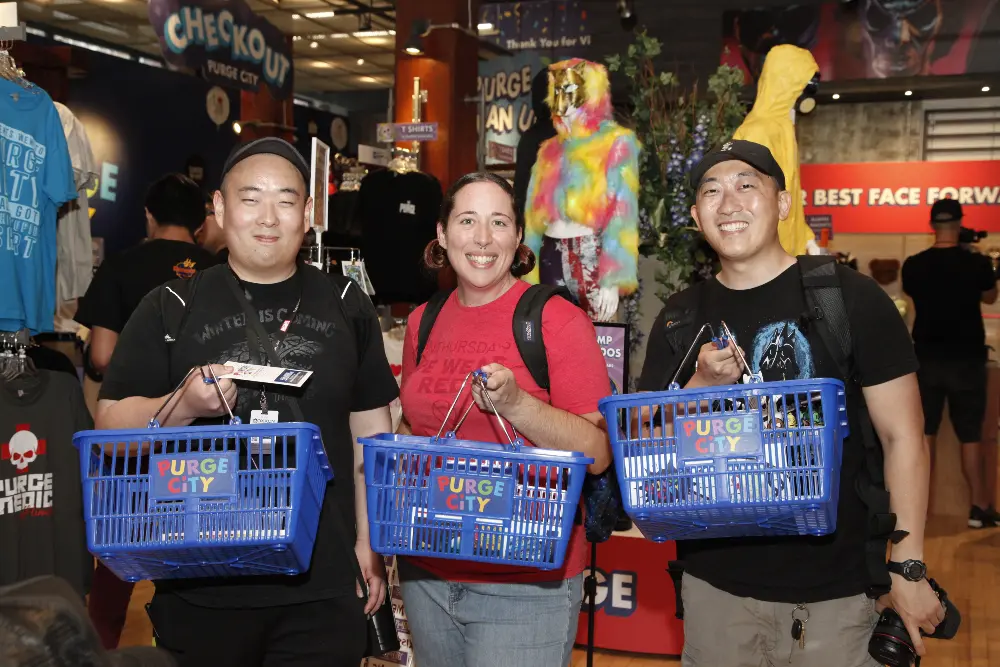
That’s a good segue into what goes into making the experiences feel real across all the different platforms you work in: the internet, film, in person, audio. What’s happening in the background to make the forgery feel real no matter how people are experiencing it?
Coulson: We don’t pretend to be podcasters. But if we have an idea for an audio drama, then we will go and find the best in the business and work with them to create that and onboard them; they’ll become part of our team.
Knowlton: We use Dropbox because our team is distributed, even before the pandemic. We crew up on each production. We’ve developed a deep bench of talent and that talent travels and we still want to be able to work with them. So Dropbox as a collaborative tool is very helpful for us.
Monello: Then it really comes down to that sense of immersion and trying to create an emotional connection. If you walk into a space and visually it’s completely unique and there’s a scent and there’s sounds that are drawing you in, it’s the kind of thing that makes people want to put down the phone and experience it.
Coulson: We talk about magic as well; a really good magician has to be a really good storyteller. I worked my way through college as a table-hopping restaurant magician. When you watch a magic trick, you know it’s not real, you know that rabbits don’t come out of hats. But there’s a moment in every magic trick where the magic happens. And if it’s really good, there’s a split second where the hair goes up on the back of your neck. Then you go, “Whoa, wait, wait, wait. That can’t be real. There must be a trapdoor, there must be…” and it dissipates. But that moment is really electric.
If we can create that moment—that moment of awe and wonder—even if it’s fleeting, it will change the way people experience it.
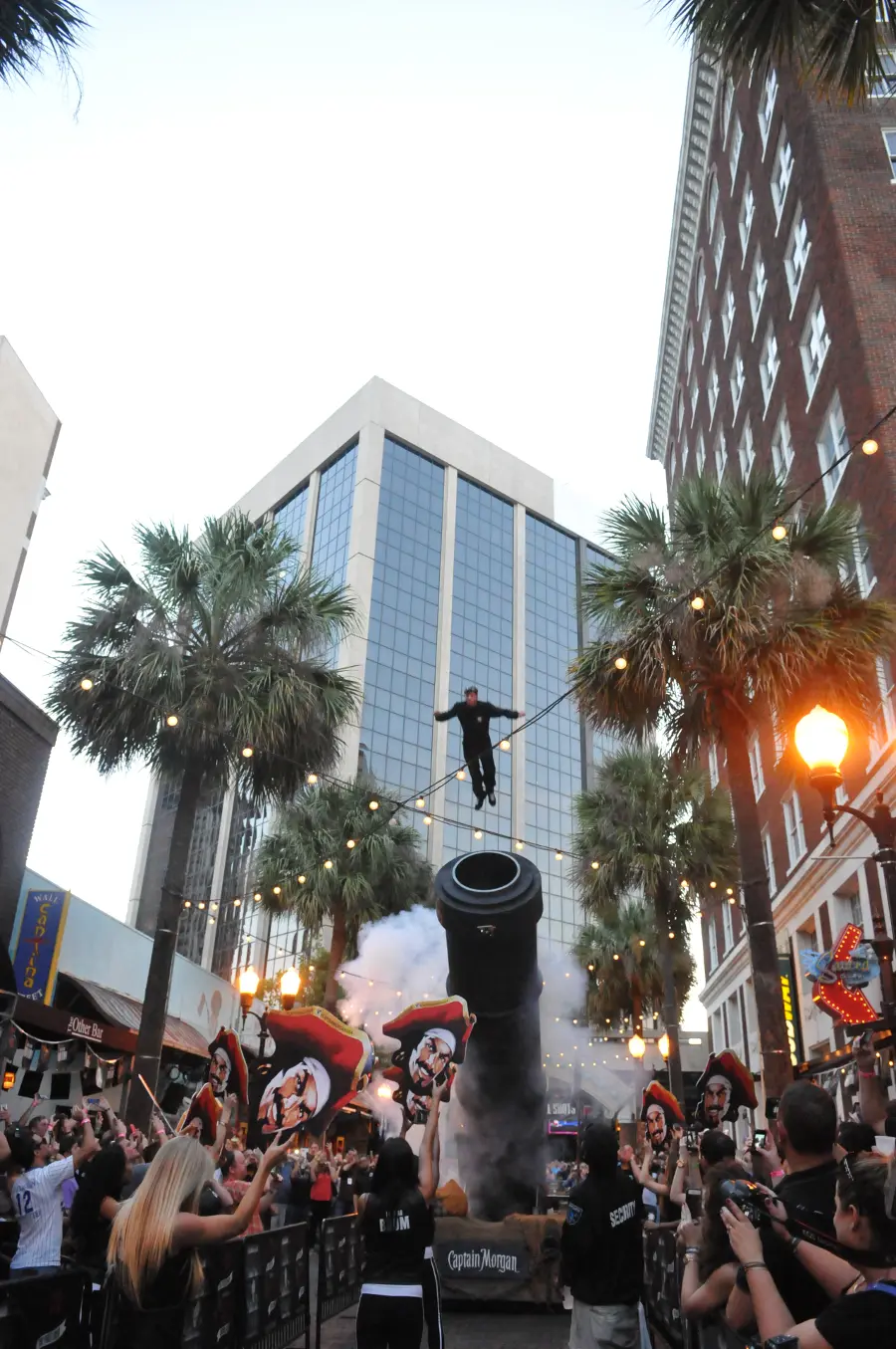
How do you find the story within the existing stories that these fandoms already love?
Mike Monello: Today as part of peak TV, we see shows becoming more ensemble like and we’re left with a ton of characters and scenarios in the world that aren’t really part of the main story, but do affect it. So you’re just looking at what piece of that world can you bring out that’s interesting and provides a view into the world.
With Steve’s example of Purge City, we’re going, “Well, if The Purge were real, what would the world actually be like?” and realizing that yes, we live in a capitalist society, so there would be people taking advantage of The Purge to exploit it for money and opening stores.
Or Resistance Radio, which we did for The Man in the High Castle. You look at that world and you go, “You know what’s not in the series? That whenever a fascist or autocratic leadership comes in, the artists are the first ones to start raising a stink and resisting through their art.” So all of a sudden, Beck fans hear him doing this cover of a song he wouldn’t normally do in a style that’s not like his. It provides fans an outlet to explore deeper, and it provides a new entry for people who are unaware of the series.
I like that. It’s like a large-scale bottle episode. You’ve described very analog feelings and experiences, but how does tech power the work that you do?
Coulson: We always gravitate to invisible technology. We spend our time thinking about stories, not about file structures. We’re really not technology people, which means I really appreciate that Dropbox is plug and play.
Knowlton: The best thing too is that we have a folder template set up with subfolders and everything. So when we start a new project, boom, all the folders are in there. As people add to the folders, it’s like everyone gains instant access to those files and the files are already in the place where they need to be, which saves an enormous amount of time.
Monello: When we’re in production, we’re typically not even in our hometowns. The ability to travel light and grab any file on any device when we need it is something that we use all the time.
Coulson: The tools in Dropbox allow us to organize subteams with levels of permission—there’s a lot of confidentiality in some projects so not everybody has access to everything. We’re using it to manage permissions and to monitor activity of those users, even from external partners. But aside from our internal and external teams, with the comics, we’re using Dropbox as a distribution mechanism, pushing them into what is essentially a published area of Dropbox that is open. [Editor’s Note: In 2022 Coulson wrote The Bestiary Chronicles, the first comic illustrated entirely with AI-generated art.] We’ve had hundreds of thousands of downloads of those comics, and it’s been great because we don’t have to worry about bandwidth.
Knowlton: And the reporting is fantastic. That’s also really helpful—just being able to see the statistics that Dropbox provides.

How do you maintain your human-centric focus when there’s so much hype around tools like VR and AI being used to tell stories?
Knowlton: When you focus on the tech, that creates a barrier to the type of immersion that we’re talking about, so we never start with the tech. It’s about the experience that we want to create, the story that we’re telling, and what are the proper or most appropriate tools we as storytellers can use to help us achieve those goals.
Monello: You can look at technology and ask yourself, Is this fulfilling a human need? And if it is, then you use it. Whereas if it’s not fulfilling a human need for us, it’s a gimmick.
I can tell you why AI has taken off in a way that VR and these other technologies haven’t. It’s because AI is capable of enhancing something that we as humans already do or want to do. Every human wants to create art if they can’t—and AI enables people to do that right away.
What’s not human is going to Google, Googling something, and then having to look through a bunch of things. That’s something we have adapted to do because that’s the best tool we have. AI is going to take a lot of these things and create human interfaces. All of a sudden, AI comes out and I ask it how to do something and it tells me in human language exactly what I need to do. It tells me at the level that I know it, and if I don’t understand something that it said, I can ask it, and it tells me and fills in the blanks.
That’s why people go, “AI feels like magic.” You’re right: It’s fulfilling a need that you always had and you didn’t know AI was the solution.
Coulson: I’ve been using AI a lot, as a tool of ideation, a tool of visualization. But again, just like any other technology, we’re using it as an enabler of storytelling. I don’t think [the comics are] about AI for AI sake; I think it’s just like how Photoshop is another tool in the suite we’ve used so far.
Every time I use it, it confounds my expectations. As a creator, that’s the exciting thing about it: what it enables and how fast it’s moving. Using something like Midjourney to create imagery is like spell casting—just a few words, and the magic really happens. I’m saying "Abracadabra" and the window opens onto a world I’ve never seen before.
This interview has been edited and condensed.




.png/_jcr_content/renditions/hero_square%20(2).webp)

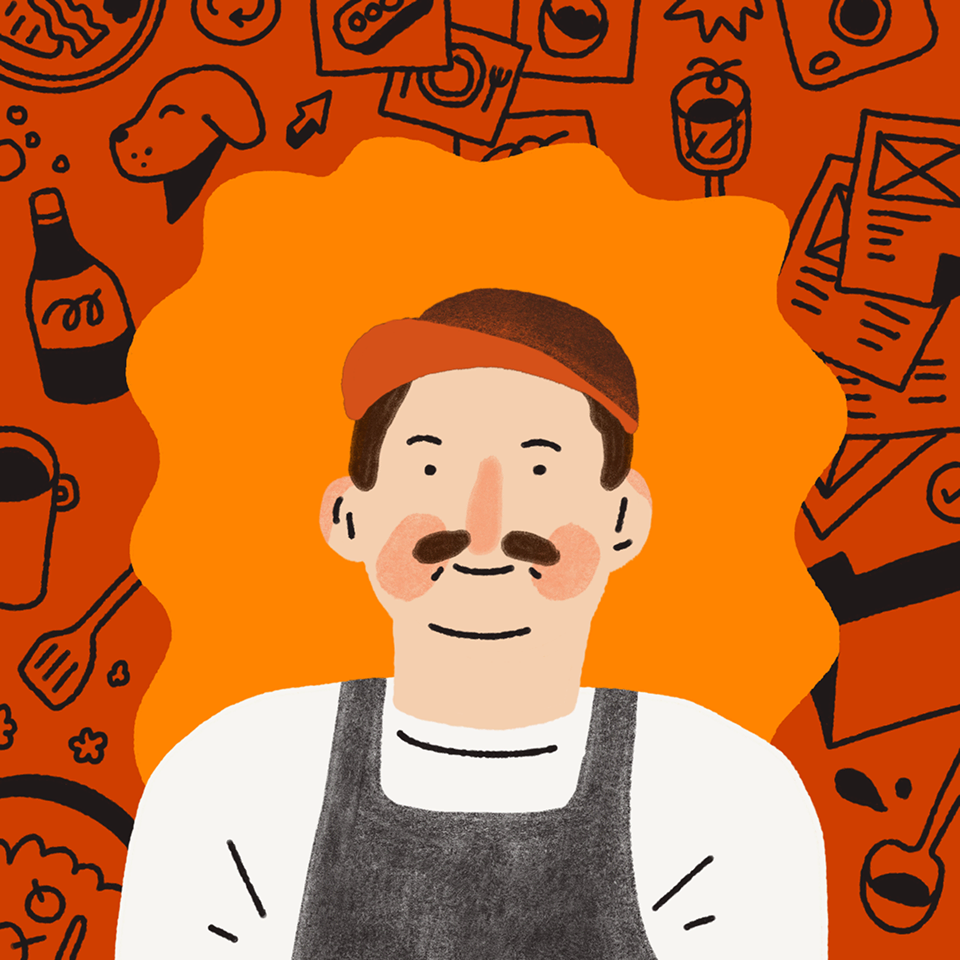





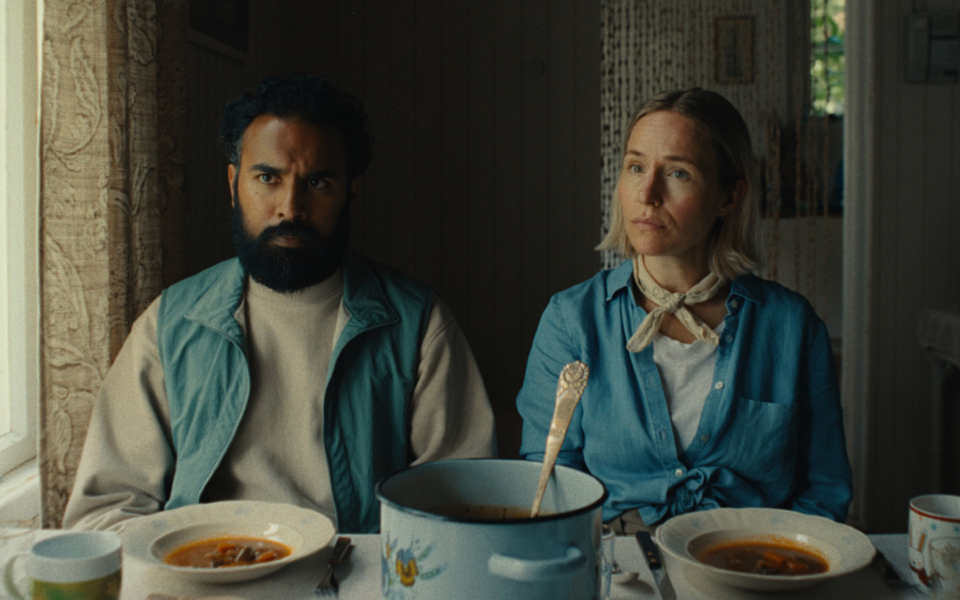






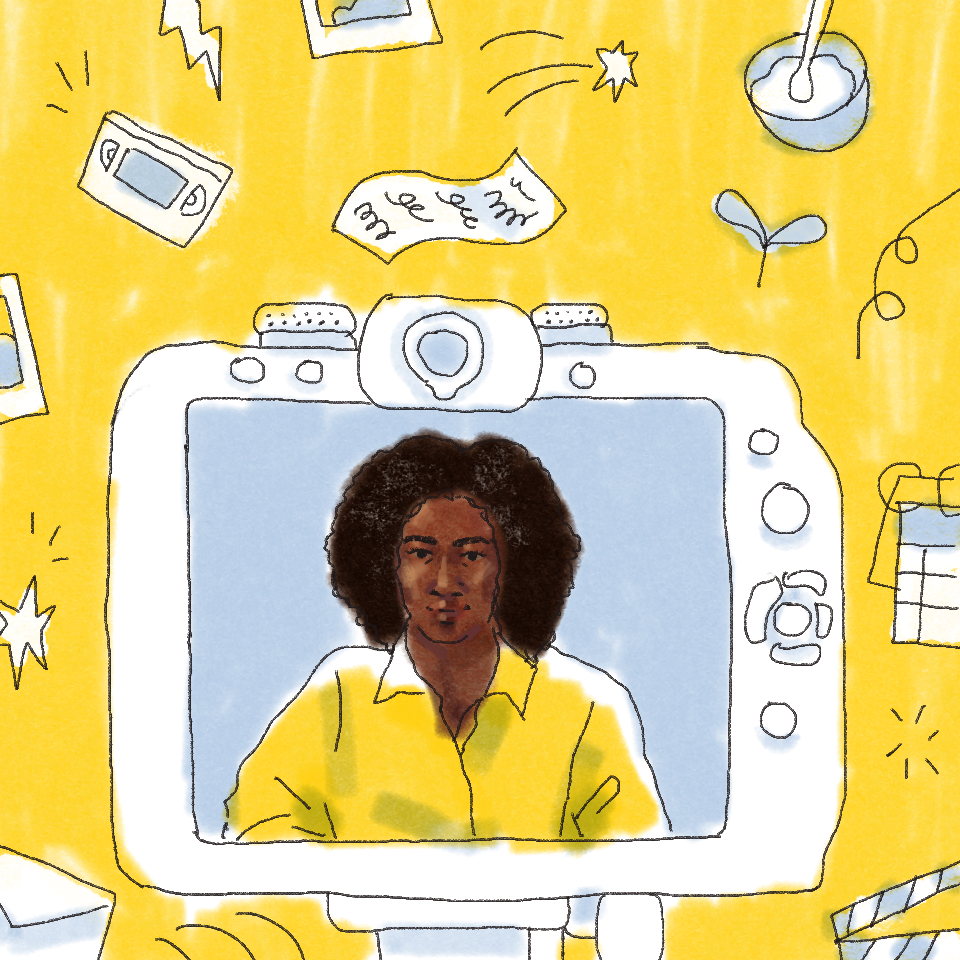
.jpg/_jcr_content/renditions/1200x628%20(5).webp)



